









Playing fetch or grooming Fido isn't just good for your precious pooch — it also benefits your brain.
Such interactions appear to strengthen brain waves associated with rest and relaxation, South Korean researchers report in the March 13 issue of the journal PLOS One. Their small study compared people's mood or hormone levels before and after spending quality time with a willing canine.
For the study, Onyoo Yoo, a doctoral student at Konkuk University in Seoul, asked 30 volunteers to take part in a series of activities with his well-trained 4-year-old female poodle. After getting to know her, the
volunteers fed, massaged, groomed, photographed, hugged, walked and played with the pup.
During each activity, EEG tests measured their brain waves for three minutes. Participants also answered questions about their emotional states after each activity.
The study revealed that different activities had varying effects on participants' brain waves.
Playing with and walking the dog increased the strength of alpha waves, a general indication of stability and relaxation, CNN reported. The study noted that alpha wave activity is linked to lower mental stress and better memory.
Meanwhile, grooming, play-
ing and gently massaging the dog strengthened beta waves — evidence of heightened attention and concentration.
Volunteers also reported feeling less stressed, fatigued and depressed after the poodle play.
Many studies in this field have been anecdotal or subjective, according to a Canadian researcher who welcomed the insights offered by these experiments.
"It is super exciting" that Yoo's research provides more insight into how the known benefits of human-animal interactions may be occurring, physician Colleen Dell told CNN. She's a research chairwoman in One Health & Wellness at the Uni-
'Animal-assisted therapy can be very beneficial for people who enjoy being around animals.'
versity of Saskatchewan.
"Studying the area in a multitude of ways — such as the EEG and subjective scales — is really important," she said.
But a University of Michigan neurology professor said the study had some shortcomings — notably a low number of participants and the lack of a control group to see whether the actions would have similar benefits if done with a human instead of a dog.
"This study was not designed to determine what mechanisms might link pet interactions to the observed changes in brain activity," physician Tiffany Braley told CNN.
Researcher Yoo conceded that further study is needed to confirm the findings. He said the results may also have been biased by the participants' own fondness for animals because they were recruited at pet salons and a dog grooming school.
But, he concluded, one thing seems clear: "Animal-assisted therapy can be very beneficial for people who enjoy being around animals."
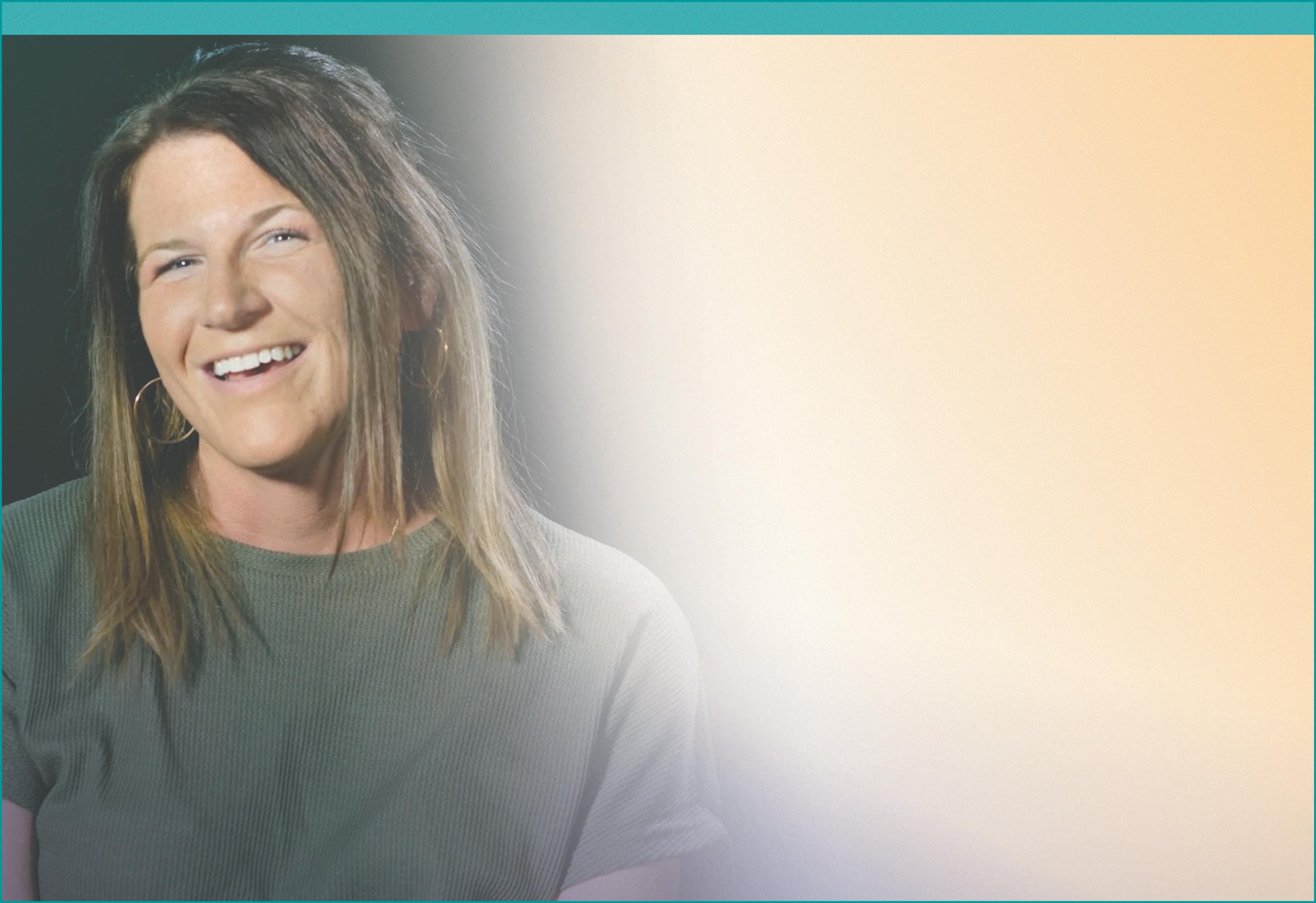


Applications are now being accepted!
SIMEON DEWITT
150 E. 1st St. Oswego, NY 13126 315-343-0440
TOWPATH TOWERS
100 Rochester St. Fulton, NY 13069 315-598-4700
SPRINGBROOK APARTMENTS
4920 N. Jefferson St. Pulaski, NY 13142 315-298-6101
The following services are included in your rent •
Preference
 By Chris Motola
Anthony Ciricillo, M.D.
By Chris Motola
Anthony Ciricillo, M.D.
New primary care doctor at St. Joe’s has done medical missions in Ghana, Haiti, Peru, Uganda, Rwanda. ‘In a lot of ways, I think that’s what inspired me to pursue a career in primary care,’ he says.
Q: What brought you to Central New York?
A: Well, I was born and raised in New Jersey; I went to undergrad in New Jersey. I did my medical training in West Virginia and then went back to New Jersey for my residency. I did my residency in family medicine with the idea of doing whole-spectrum family medicine. That somehow brought me out to Iowa where I was working in a very small critical access hospital. Only 20 beds. That gave me a unique opportunity to work with a very small, underserved community. After a while I got really homesick and missed family and friends back on the East Coast. I realized how important work-life balance is for doing my job effectively. That got me back on the East Coast. St. Joe’s has a great family medicine program, so I thought this was the perfect opportunity to do what I love and be a faculty teacher in an academic environment. So that’s why I’m here.
practicing here?
September. It’s amaz ing how time went

finding solutions to everyday problems. In a lot of ways, I think that’s what inspired me to pursue a career in primary care. Using medicine as a platform to create change and bring people together. I haven’t really traveled since I finished medical school. For now I’m trying to get my feet under me, getting experience and looking for opportunities to partner and maybe get involved in that again in the future.
Q: How do you apply the insights from your mission work to your domestic practice?
A: Working here in Syracuse, I see a lot of need locally, people struggling with financial issues. There are a lot of things we can do here. It’s not an easy answer, but I think it takes people from all different backgrounds working together to find solutions.
by so quickly.
Q: You’ve done a number of missions over the years.
A: Yeah. My first mission trip was 10 years ago. After college I was working in pharmaceuticals with Johnson & Johnson in New Jersey in a desk job. I wasn’t really challenged or inspired by my work. It felt very financially driven. I had always been inspired by the work of physicians like Patch Adams who did things differently, did a lot of nonprofit work, domestic and international. I was just sort of searching for deeper meaning and purpose in my own life. That got me into mission trips. My first was to Ghana. I went with a big group, which is always cool because you’re meeting people from all over the world. I was working at a school for children with special needs. I did a number of other trips to Haiti, Peru, Uganda and Rwanda. Once I got to
Q: What about primary care appealed most to you?
A: It was a lot of different things. In Haiti I was working with a primary care doctor. In medical school, I was really inspired by my mentor who was a primary care physician who also did obstetrics. That was a very unique thing; I didn’t even know that was possible, to be a family doctor and deliver babies. And then I used the inspiration I had from my overseas travels. I saw so many issues with maternal and child health. And I thought what a better way to get involved than enter a field where you can wear so many different hats. So it’s a challenge but it’s very gratifying. And there’s definitely a relationship aspect to that. Taking care of people and watching their babies grow.
Q: What did you learn from your time in the pharmaceutical industry?
A: Obviously medications are very important in our field, but there are just so many financial barriers that patients run into. Insurance companies not always approving prescriptions. That’s always a struggle. I have a lot of respect for what they do, but I think there are better ways to make those medications available.
Q: Do you see yourself settling in Central New York for the long haul?





A: Yeah, I do. I’m really happy with my job. I think this hospital gives me a lot of support. I have great mentors around me, people who have done their residency training here and stayed here for 20, 30 years. So I’m allowed to pick their brains and, in turn, as a teacher, hopefully inspire younger physicians. And it’s close enough to home where I can still see my parents or go home for a weekend if I need to. I can have a life outside of work, too, which I enjoy.
Name: Anthony Ciricillo, M.D.
Position: Family Care Physician and Obstetrician at St. Joseph’s Physicians Primary Care in Fayetteville
Hometown: Belleville, New Jersey
Education: West Virginia University School of Medicine
Affiliations: St. Joseph’s Health Hospital
Organizations: American Academy of Family Physicians
Hobbies: Pickleball
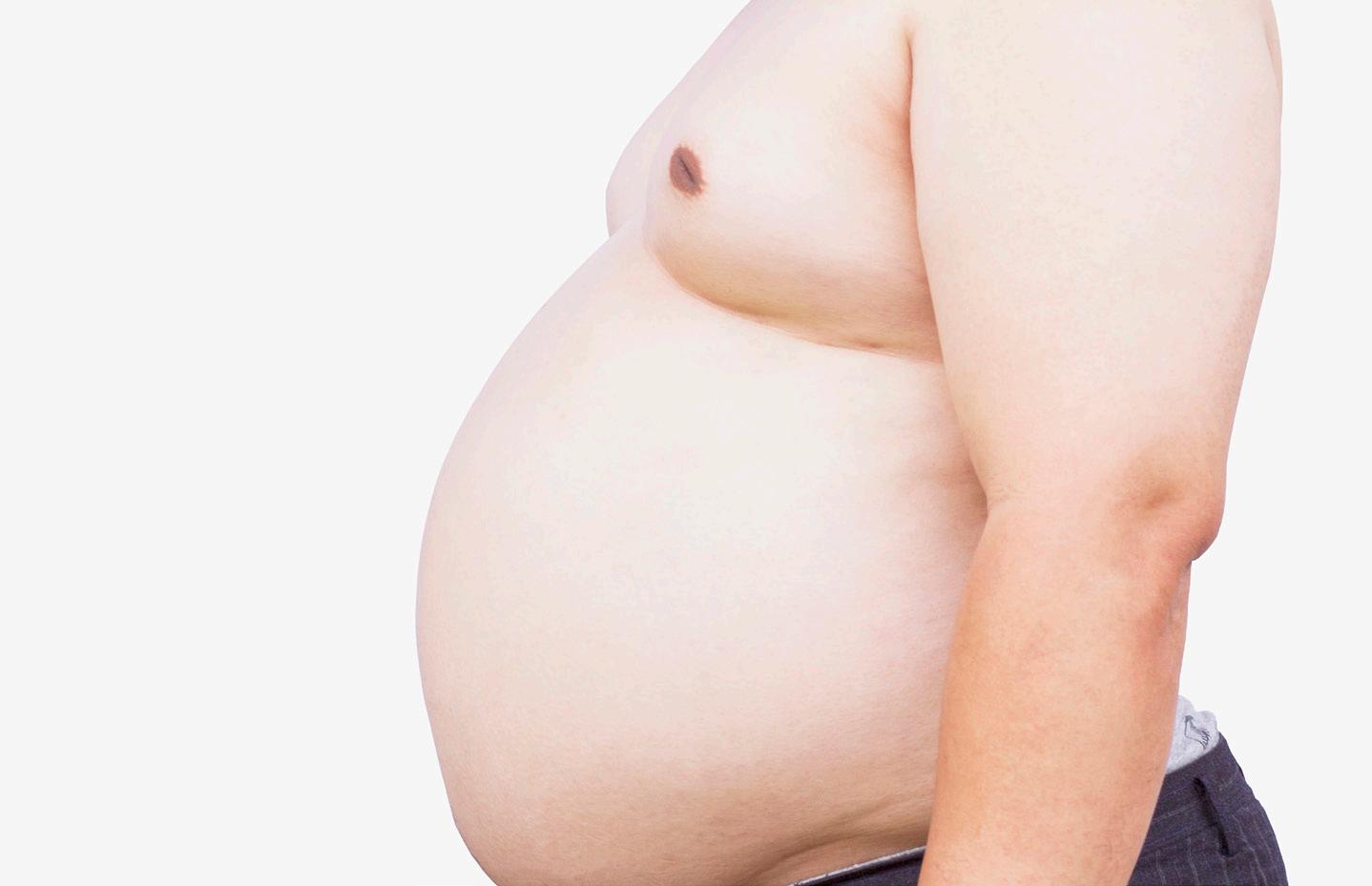
The United States ranks 10th highest in the world for obesity in men, results show.
More than 1 billion adults and children around the world are now obese, a new global analysis estimates.
Nearly 880 million adults now are living with obesity, as well as 159 million children, according to the report published Feb. 29 in The Lancet journal.
Obesity rates for kids and teenagers quadrupled worldwide between 1990 and 2022, rising from 1.7% to 6.9% for girls and 2.1% to 9.3% for boys.
Meanwhile, adult obesity rates more than doubled during the same period, researchers found. Obesity increased more than twofold in women (8.8% to 18.5%) and nearly tripled in men (4.8% to 14%).
“It is very concerning that the epidemic of obesity that was evident among adults in much of the world in 1990 is now mirrored in schoolaged children and adolescents,” said senior study author Majid Ezzatti, chairman of global environmental health at Imperial College London.
These figures outstrip predictions made by the World Obesity Federation, which had predicted that 1 billion people globally would be living with obesity by 2030 in its World Obesity Atlas 2022.
Essentially, the globe had already surpassed that mark by the time of the atlas' publication, according to the new study.
Obesity is now the most common form of malnutrition in most countries, researchers said.
That's because the proportion of adults who are underweight declined by more than half between 1990 and 2022, and by one-fifth in girls and more than one-third in boys.
More than 1,500 researchers contributed to the study, which looked
at body mass index for more than 220 million people representing more than 190 countries.
In the United States, the obesity rate increased from 11.6% to 19.4% between 1990 and 2022 for girls and from 11.5% to 21.7% for boys.

About 44% of American women and 42% of American men are now obese, up from 21% and 17% two decades earlier, researchers report.
In fact, U.S. men experienced the world's third-greatest increase in obesity rates during those two decades, just behind Romania and Qatar, results show.
The United States rates 10th highest in the world for obesity in men, results show. The nation also ranks 36th in obesity among women, 22nd in obesity among girls and 26th in obesity among boys.
The island nations of Tonga and American Samoa have the highest obesity rates in the world for women, while it is American Samoa and Nauru for men. In Polynesia and Micronesia, more than 60% of the adult population is living with obesity.
There are many forces driving obesity around the world, according to the World Obesity Foundation. These include genetics, biology, access to health care and increased availability of calorie-dense foods that lack essential nutrients.
Researchers worry that major global issues will worsen both obesity and underweight.
“The impact of issues such as climate change, disruptions caused by the COVID-19 pandemic, and the war in Ukraine risk worsening both rates of obesity and underweight, by increasing poverty and the cost of nutrient-rich foods,” researcher Guha Pradeepa, from the Madras Diabetes Research Foundation, said.
Camp EAGR provides an amazing sleepaway summer camp experience for kids with epilepsy and their siblings, aged 8-17, in a safe, supportive environment with highly trained counselors and 24/7 on-site neurologist.
July 21 - 27, 2024
Rochester Rotary Sunshine Camp

Learn more and register at epiny.org






 By George W. Chapman
By George W. Chapman
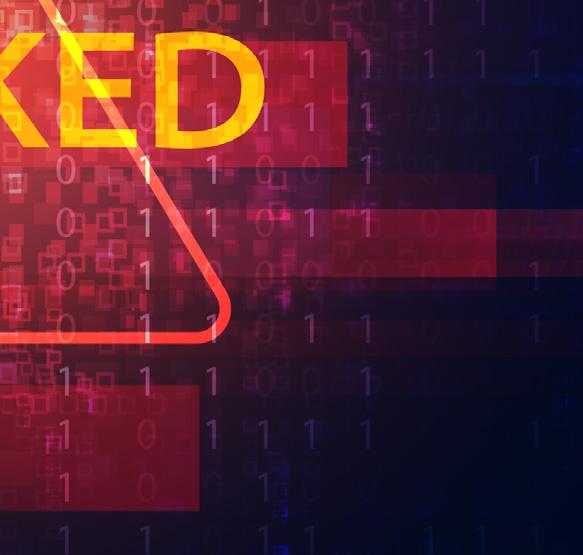

middleman (pharmacy benefit managers) and sell directly. Established giant PBMs like CVS Caremart, Cigna Express Scripts and United’s OptumRx refuse to work with CPD. As a sign of things to come, California’s largest insurer, the Blues, has dropped their PBM, CVS Caremart and affiliated with Amazon and Prime to significantly lower drug costs.

On Feb. 22, 2024, the giant healthcare billing clearinghouse “Change Healthcare” (owned by United Healthcare Group) was hacked. It is the clearinghouse for 50% of all medical claims in the US or 15 billion claims totaling $1.5 trillion annually. It is the link between providers and payers. The
The final num ber for 2023 is still being calculated, but it’s safe to say now that it will be in the neighborhood of $4.7 trillion.
That is well over $13,000 per capita, which is nearly double the per capita cost in other wealthy developed countries, most of which have national health plans.
American Hospital Association called the hack “the most significant attack on the healthcare system in US history.” Tens of thousands of physicians, dentists, pharmacies, hospitals and other ancillary providers can’t get paid. New York Sen. Chuck Schumer asked CMS to cut through the red tape and advance payments to
MA plans added 1.7 million new members in 2024. The big three commercial carriers, United, Humana and Aetna, accounted for 86% of the new members.

As our nation continues to age and baby boomers hit their 70s, actuaries estimate that by 2030, less than seven years from now, our nation’s healthcare bill will approach an astounding $16 trillion. That’s more than triple the cost of last year.
This will be nothing short of calamitous.
If life expectancy is a good indicator of the true bottom line or getting our money’s worth, you need to look elsewhere. We don’t crack the top 50 of all countries ranked by life expectancy.
There are two outstanding contributors to our exorbitant costs that other countries with national plans or single payers don’t have to contend with. First, our countless insurers result in multiple non-clinical administrative and overhead costs and profits. (Medicare has lowest administrative costs of all insurers.) Second, we spend (and use) far more on drugs per capita. Other countries with national or single payer systems use their purchasing power to negotiate all drug prices. Not just a measly 10 prices which Congress has reluctantly allowed Medicare to do in a couple more years. If not in this election cycle, healthcare will be the No. 1 issue in 2028.
Of the big three, Aetna grabbed 60% or 476,000 new members. Nonprofit plans didn’t fare as well. The Blues attracted only 9% of new members. The steady wave of baby boomers eligible for Medicare has slowed down somewhat. Between 2015 and 2020, MA membership grew at 22%. Between 2020 and 2025, it is estimated growth will decrease to 16%. New members or younger seniors don’t generate many claims, yet. Consequentially, profits are healthy for the various MA carriers. Claims naturally increase as younger seniors become older seniors. As the steady stream of newbies or younger seniors dwindles, so will insurer profits. CMS is vigilant for carriers that will tend to mark-up or “up code” claims to increase their annual per member payments from Medicare. United is being investigated for their artificial intelligence system which denies more prior authorizations for care than traditional Medicare.
By next year, 2025, we will be at a tipping point with the nursing shortage. Shortage estimates run anywhere from 200,000 to 450,000. If left unresolved, we can expect delays in treatment, a decrease in the “human touch,” increased waiting times and more stressed-out nurses retiring earlier and earlier. Primarily due to the shortage of nursing instructors,

providers while the clearinghouse is shut down. Too many eggs in one basket? The Department of Justice tried to block the purchase of Change Health by United Healthcare Group in 2022 but failed. As of this writing, the problem hasn’t been corrected and providers can’t get paid.
78,000 qualified applicants to nursing schools were turned down for admission. 10% of nurse instructor openings are unfilled. The average nurse instructor is between 56 and 60 years old. Nurse PhD applicants have decreased 10% in the last decade. The shortage of teachers is impacting capacity. Thankfully, in a rare example of bipartisanship, Congress is passing legislation to bolster the “nursing pipeline.” The Train More Nurses Act (S. 2853/H.6122) requires DHHS and DOL to conduct a study and issue a report on grant programs available to mitigate the nursing and allied professional shortage. Other legislation includes The Allied Health Opportunities Act (S.2304); The Precept Nurses Act (S.1627); The Nurse Faculty Shortage Reduction Act (S.2815/H.7002); and the Occupational Workforce Training for Healthcare Act (H.6078).
The billionaire entrepreneur has been shaking up the drug industry with his “Cost Plus Drug” company. CPD currently provides more than 2,500 generic drugs to more than two million consumers. The key is pure pricing transparency which is anathema to the drug industry. Price equals actual manufacturing cost plus a moderate markup for distribution and profit. Cuban said we need to “sustain versus extort.” CPD has recently constructed an 11,000 square foot facility in Dallas to produce sterile injectables which are in short supply. They are working with the FDA on other shortages. Cuban wants to bring prices down and bring manufacturing back to the US, away from China. For example, penicillin G benzathine now costs a staggering $600 per vial. CPD is working with the FDA to produce it for $3 per vial.. Yep. Cuban wants to bypass the expensive
Firearm injuries are now the No. 1 cause of death in children and young adults, ac cording to the Kaiser Family Foundation. Statistics show there has been a 42% increase in pediatric firearm deaths between 2018 and 2022. Eighty percent of adults report gun violence as a major concern. Northwell Health recently sponsored a meeting in New York City to discuss the alarming trend. Attending were providers, researchers and government agencies. A new multi-million-dollar awareness campaign was launched. So far, $10 million was pledged to the Ad Council by Northwell, Intermountain Health, Johns Hopkins, Children’s Hospital Association and Yale New Haven Health, among others. The goal is to raise $40 million in two years. DHHS has updated and improved their reporting mechanism for tracking pediatric gun deaths. 75% of all emergency rooms participate.
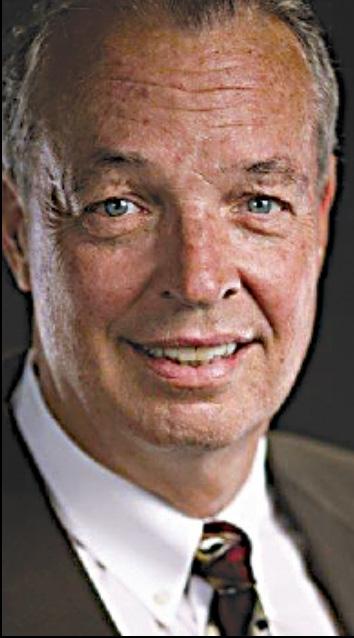
The Affordable Care Act mandated that all insurers must provide certain preventive services, like immunizations and mammograms, without co-pays from patients. In a sense, they are “free.” This impacts everyone with insurance. A little-known lawsuit brought by the nonprofit Christian-sponsored Braidwood Management challenged the free preventive care mandate. Braidwood argued it should not be forced to provide preventive HIV drugs because it violated their rights under the Religious Freedom Act. And the government’s advisory committees that developed the preventive services mandate were not properly appointed by the president, which violates the Appointments clause. Basically, they argued congress cannot delegate such responsibilities to government agencies under some cases. A lower court has agreed with Braidwood. It is being appealed. Legal experts believe it will eventually go to the Supreme Court, which will probably ignore the religious freedom argument and focus on the delegation of authority argument. Recently, SCOTUS has been wary of congress delegating regulating authority to agencies, like the EPA for example.
George W. Chapman is a healthcare business consultant who works exclusively with physicians, hospitals and healthcare organizations. He operates GW Chapman Consulting based in Syracuse. Email him at gwc@gwchapmanconsulting.com.
ELEMENTAL MANAGEMENT GROUP
ELEMENTAL MANAGEMENT GROUP
Hybrid Nurse Aide Training Program
Hybrid Nurse Aide Training Program
ELEMENTAL MANAGEMENT GROUP
Hybrid Nurse Aide Training Program
Hybrid Nurse Aide Training Program
ELEMENTAL MANAGEMENT GROUP
ELEMENTAL MANAGEMENT ROUP
ELEMENTAL MANAGEMENT GROUP






ELEMENTAL MANAGEMENT GROUP



Equip your facility with our unstoppable HYBRID CNA program, empower your team to deliver top-notch care with the strength of a champion.
Equip your facility with our unstoppable HYBRID CNA program, empower your team to deliver top-notch care with the strength of a champion.
Equip your facility with our unstoppable HYBRID CNA program, empower your team to deliver top-notch care with the strength of a champion.
Are you looking for an innovative way to attract CNA students? We have your answer
Are you looking for an innovative way to attract CNA students? We have your answer
Equip your facility with our unstoppable HYBRID CNA program, empower your team to deliver top-notch care with the strength of a champion.
Are you looking for an innovative way to attract CNA students? We have your answer
Are you looking to minimize and most importantly eliminate agency use? We have your solution
Are you looking to minimize and most importantly eliminate agency use? We have your solution
Are you looking for an innovative way to attract CNA students? We have your answer
Are you looking to minimize and most importantly eliminate agency use? We have your solution
Are you looking to improve morale by increasing your direct care PPD?
Are you looking to improve morale by increasing your direct care PPD?
Reach out to us to hear more
Reach out to us to hear more
Are you looking to improve morale by increasing your direct care PPD?
Are you looking to minimize and most importantly eliminate agency use? We have your solution
Reach out to us to hear more
Are you looking to improve morale by increasing your direct care PPD?
Are you looking to captivate and motivate the newer generation by offering unique and rewarding training opportunities?
Are you looking to captivate and motivate the newer generation by offering unique and rewarding training opportunities?
Reach out to us to hear more
Are you looking to captivate and motivate the newer generation by offering unique and rewarding training opportunities?
Look no further contact us today
Look no further contact us today
Look no further contact us today
Are you looking to captivate and motivate the newer generation by offering unique and rewarding training opportunities?
CONTACT:
CONTACT:
Look no further contact us today

Peg Reith BSN, RN
Peg Reith BSN, RN
Phone: 315-529-3267
CONTACT:
Phone: 315-529-3267
Email: CNA_Training@elementalmgt.com
Email: CNA_Training@elementalmgt.com
Peg Reith BSN, RN
Phone: 315-529-3267
CONTACT:
Peg Reith BSN, RN
Email: CNA_Training@elementalmgt.com
Phone: 315-529-3267
Email: CNA_Training@elementalmgt.com








It wasn’t easy. As a woman who lived through the challenges of divorce, I understand first hand how difficult it can be to ask for help.
The thought of reaching out for assistance was daunting. I didn’t want to be a burden or inconvenience my family and friends.
I wanted to show the world that I was perfectly fine, thank you. I avoided asking anybody for anything, determined to muscle through on my own, which only led to isolation and needless hardship.
But as I navigated my new-found independence, I began to realize the importance of asking for help and the positive impact it could have on my life and relationships.
It all started with spring cleaning.
I simply had to make sense of the boxes and bags of family photos, documents, and items I “inherited” after losing my mother and father. I had procrastinated for far too long.
It was time.
So ... I called my dear friend Carol and asked if she would help me begin the emotion-laden process of deciding what to keep, donate or throw away.
A self-described decluttering guru, Carol happily agreed to get me started. Among many helpful tips,
she encouraged me to ask myself, “Does it have value? Does it bring me joy?”
I’m delighted to report that — together — we made great progress. Her help was invaluable!
And we had a good time together, often laughing at the silly things I’ve held onto all these years. My grade school report cards come to mind. No need to be reminded that I “whispered too much.”
as incapable or inadequate? Are you concerned about being a bother? Or, would asking for help force you to acknowledge that, indeed, you need it?
• Redefine what it means to be strong. Everyone needs outside support from time to time, and seeking help on your terms is not a weakness. In fact, the strongest people are often those who have the courage to admit they need reinforcements.
I’ve always admired this quality in others. Real strength is knowing your personal limitations and having the confidence to recruit assistance when necessary.

Spring cleaning is a perfect example of a task that can be overwhelming to tackle alone. Could you use an extra pair of hands?
Here are some tips on how to ask for help:
• Be honest. Take a moment to reflect on what keeps you from asking for assistance. Could it be pride? Do you think you’ll be seen
• Have some faith. Believe that people truly want to help. Just think about how you’d respond if a friend, family member or co-worker asked for a helping hand. You likely wouldn’t hesitate; you might even feel slighted if not asked, especially if someone you cared about was having real difficulty.
Know that others, too, want to be there for their friends and family in need.
• Take a chance. When you choose to open yourself up and expose your authentic self, you are taking a risk. That’s a good thing! When you are “real” like this, you have an amazing opportunity to cultivate deeper, more meaningful bonds with others.
• Make the request. First put some thought into where you could
really use some support; then ask for help with one specific task. It could be something as simple as asking a neighbor for help raking out a garden bed or cleaning the garage to something as important as identifying a trusted roofing contractor.
If finding the right words to make a request is difficult, you might start out by saying, “You know, I’m not very comfortable asking for favors, but I wonder if you might be able to help me with something?”
• Express your gratitude. You know this, of course. A heartfelt thank you in person or in writing will be warmly received by the person whose help you have accepted. No need to go overboard. Remember, people want to help others and don’t expect to be compensated for doing a good deed.
• Offer help in return. Because giving can be as gratifying as receiving, make it known that you are available to return the favor. Better yet, find opportunities to offer help. We all have gifts and can be of great assistance to one another.
So, take it from me . . . life can be better, just for the asking.
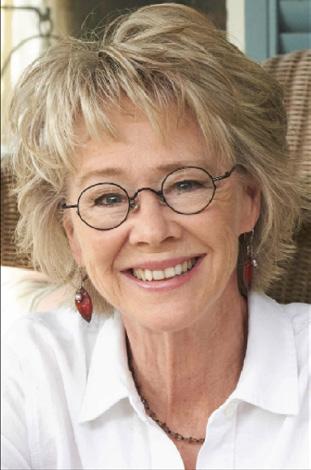
Gwenn Voelckers is the author of “Alone and Content: Inspiring, empowering essays to help divorced and widowed women feel whole and complete on their own.” She welcomes your thoughts on this column as well as topic suggestion for future essays at gvoelckers@rochester. rr.com.





Say hello to a more convenient way to stay healthy in Oswego County. ConnnextCare offers a comprehensive set of services - family and internal medicine, pediatrics, dentistry, psychiatry, substance use disorder treatment and social work all under one medical group. Patients within our network can visit any of our seven locations at any time.
ConnextCare also offers medical, dental and mental health services at eight School Based Health Centers in five Oswego County school districts.

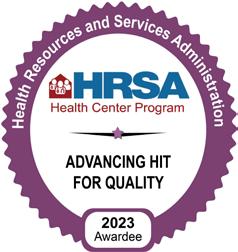
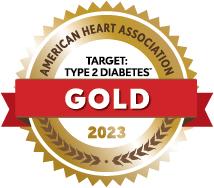


As a physician, I’m always learning with continuing medical education. Recently some CME popped about ketamine and its use to treat mental health disorders.
I had a little familiarity with ketamine as an anesthetic agent — but not a lot since it’s not something we use at the urgent care.
It’s also been used as a recreational drug whose street names include Cat tranquilizer, Cat valium, Jet K, Kit Kat, Purple, Special K, Special La Coke, Super Acid, Super K and Vitamin K.
Ketamine was first synthesized in 1962. In 1970 it was approved by the FDA as an anesthetic and analgesic (pain-relieving) medication. It acts as a dissociative anesthetic that distorts perceptions of sight and sound. It’s short-acting but makes the user feel disconnected. It may cause hallucinations.
Mental health disorders for which ketamine has been studied include depression, anxiety, post-traumatic stress disorder, obsessive-compulsive disorder, bipolar disorder in the depressed phase and substance abuse disorders.
Ketamine generally acts more quickly than antidepressant drugs, often alleviating suicidality within 24 hours.
Currently it’s reserved for patients who have failed at least two different antidepressant drugs that
were tried at adequate doses and duration. When given in a controlled setting it’s not habit-forming.
Ketamine blocks the NMDA receptor in the brain. The NMDA receptor inhibits the release of the neurotransmitter chemical glutamate. In the presence of ketamine, glutamine levels surge. It’s thought that this surge leads to the rapid antidepressant effect.
Advantages of ketamine include that it’s widely available. It’s easy to administer as it comes in oral, IV and intranasal forms. In appropriate doses it does not reduce heart rate, respiratory rate or blood pressure. The dose used, 0.5 mg per kg, is far lower than the lethal dose of 11-12 mg per kg.
in patients with substance abuse, uncontrolled high blood pressure, pregnancy or breastfeeding and patients taking monoamine oxidase inhibitor medicines. Other contraindications are a history of seizures, brain aneurysms, thoracic aneurysms or a previous bad reaction to ketamine.

Ketamine is contraindicated in some patients. Because it can induce or worsen mania, it should not be used in bipolar patients in the manic phase. It may cause psychosis and should be avoided in actively psychotic patients. It should be avoided
The most common side effect is nausea and vomiting due to dizziness. Patients can be pre-treated with anti-nausea medicines if at risk. Because ketamine often causes dissociation patients may experience unusual sights or sounds. Some people find this pleasant or euphoric, but others dislike this sensation. Other potential reactions include sedation, fatigue, elevated blood pressure, dizziness, blurred vision, nystagmus (eyes jerking back and forth) and rarely confusion. The dose of ketamine is easiest to control when given via the IV route, typically infused over 40 minutes. The form approved for anesthesia, called racemic mixture, is used off-label for mental health diagnoses and may not be covered by insurance. Ketamine can be given via the intramuscular route — typically one to three shots 15 minutes apart. Unlike an IV it can’t be stopped if the patient has a bad reaction and takes longer to wear off. There is a form of ketamine called S-KET that is covered by insurance. After administration patients remain in the office
for two hours. The peak effect occurs about 15 minutes later than with the racemic form. Racemic ketamine can be made into a nasal spray by a compounding pharmacy but has expensive out-of-pocket costs. Oral or sublingual (under the tongue) forms have the lowest bioavailability and also likely high out-of-pocket cost.
S-ketamine, brand name Spravato, can only be given in certified Spravato treatment centers. Patients are monitored in the office for two hours. They are not allowed to drive home afterward and require transportation. For the first four weeks, Spravato is given two times per week. In weeks five to eight it’s administered twice per week. After that the maintenance dose is given once a week or once every other week.
Because the brain has increased neuroplasticity (ability to change) for the first day after receiving ketamine, psychotherapy can be very beneficial in the first 24 hours. The therapy can be done during or after the treatment. It’s particularly useful to help PTSD patients work through traumatic thoughts.
This article is just a brief summary about medical ketamine. If you think ketamine might be helpful, you will need to discuss this with an experienced mental health provider.
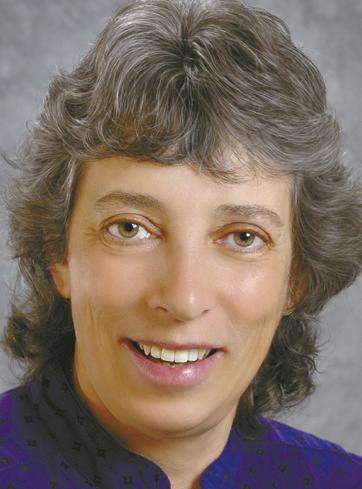
Men’s health issues can be complex and numerous. Managing them doesn’t have to be.
Eva Briggs is a retired medical doctor who practiced in Central New York for several decades. She lives in Marcellus.
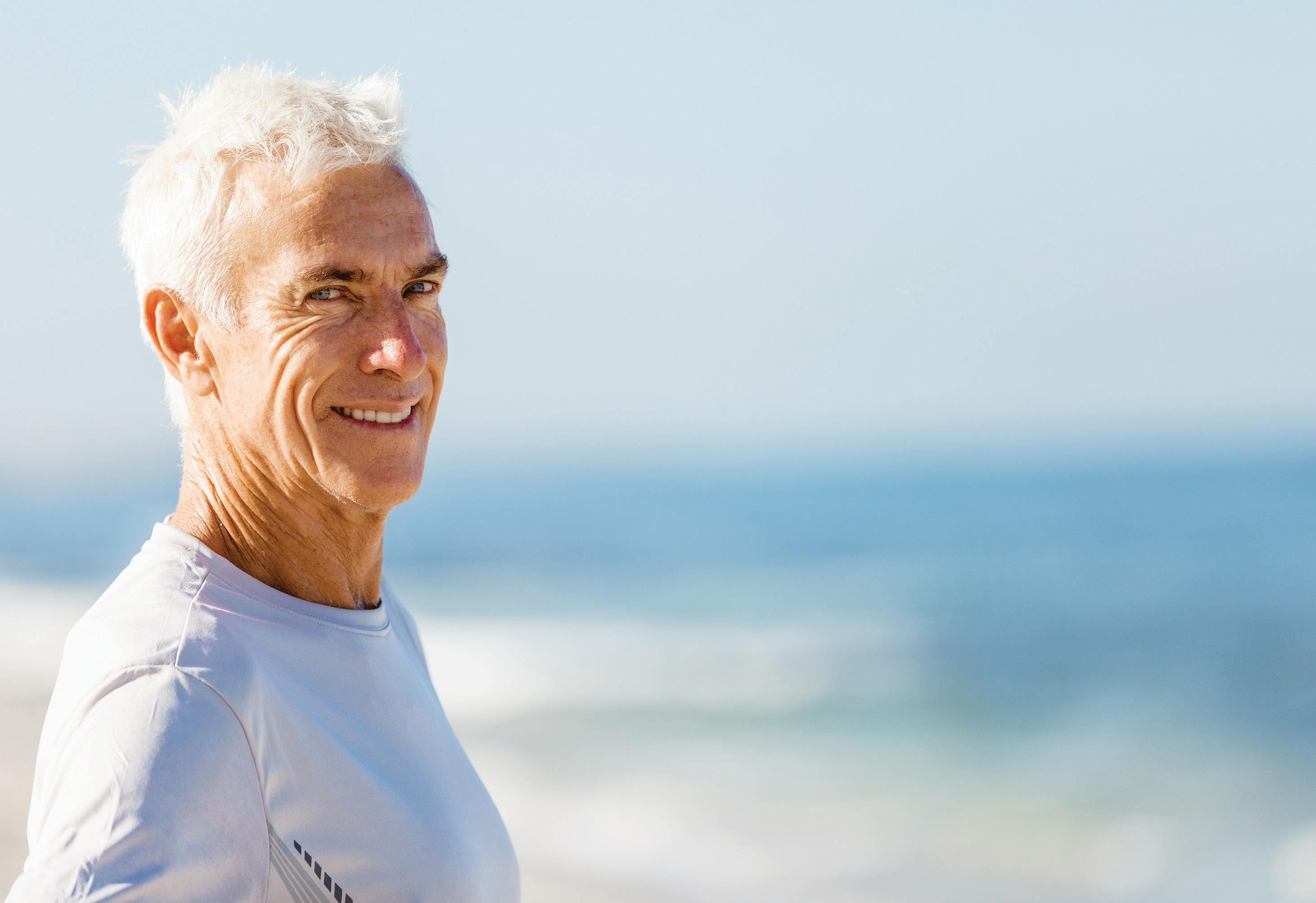
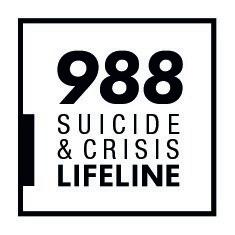




If it seems like you hear about autism spectrum disorder more than you used to, you’re not imagining things.
The Centers for Disease Control and Prevention reports that the prevalence has increased from 1 in 44 US children to 1 in 36.
Andy Shih, chief science officer at Autism Speaks in New York City, said the perceived increase in prevalence reflects progress in awareness, as well as earlier identification and diagnosis.
“More people have become aware of the signs of autism and the tools that can assist in identifying it, the more compelled they are to seek an official diagnosis,” Shih said. “While the prevalence increase is an indication of progress in certain aspects, it also reiterates the need for increased funding for autism research and services throughout the lifespan and spectrum and a need for earlier screenings as the average age of diagnosis in the U.S. is still 4 to 5 years old when we know that autism can be reliably diagnosed by 18 months to 2 years.”
Screening at the pediatrician’s office can help identify more children who would benefit from intervention.
Autism Speaks offers tools to address these needs, including the M-CHAT checklist. This screening list poses a series of questions for
toddlers to help identify signs of autism and assess whether they may need further evaluation. Shih also said that the World Health Organization’s virtual Caregivers Skill Training Program, developed in collaboration with Autism Speaks, provides a self-guided platform to teach caregivers therapies and services skills that can foster the development of their child.
“Intentional, targeted outreach, as well as training culturally informed service providers can also make a difference in delivering accessible quality care to the growing number of children with autism, especially in underserved communities,” Shih said.
The Autism Speaks Autism Care Network forms a partnership among 20 participating medical centers across the U.S. and Canada and uses patient insights to improve person and family-centered autism care.
Local providers agree that increased awareness and screening has led to the rise in diagnosis.
“To a large extent, the increase in the diagnostic rate is related to two factors,” said Henry Roane, Ph.D., executive director of the Golisano Center for Special Needs and chief of development, behavior, and genetics in the department of pediatrics at Upstate Medical University. “One, health care providers are getting better at recognizing signs of ASD
If you have a child on the autism spectrum, it’s only natural to wonder why. Or wonder if something you do could help mitigate your child’s behavioral issues that are caused by autism.
Many parents scrutinize their children’s diet.
If the right foods can promote good health and prevent disease, could it also affect autism?
“ASD [autism spectrum disorder] is an increasingly common disorder with considerable variability,” said physician Prateek D. Wali, division director at Karjoo Family Center for Pediatric and Gastroenterology, Hepatology and Nutrition and director of the Pediatric IBD Program at Upstate Golisano Children’s Hospital. “Gastrointestinal issues are commonly encountered and may be secondary to selective diet while also playing a role in exhibited behavioral symptoms.
“Therefore, nutritional interventions are often used in ASD both with
which leads to better screening and early identification. The second factor is that society as a whole has become more aware of ASD, particularly in the media. This has likely led to more people pursuing diagnostic assessments.”
Roane is also the Gregory S. Liptak professor of child development at Upstate, in addition to being the executive director of Golisano Center for Special Needs, chief of the Division of Development, Behavior and Genetics and Department of Pediatrics at SUNY Upstate Medical University.
Recent research and improved diagnostic tools have helped Theresa McIntyre, speech-language pathologist for the Golisano Center for Special Needs, broach the subject of ASD with parents.
“We tend to feel more comfortable bringing up the subject of ASD to parents sooner than we have done in previous years,” she said.
This can help families access earlier the resources that can help their children.
More healthcare providers are identifying and seeking to address bias when treating people of color. This may also be a factor in the growth of ASD diagnoses.
“Research had typically shown higher ASD prevalence for white children, yet more recent studies have shown these rates becoming more equivalent across race,” said Sean Smith, PhD, a clinical provider a clinical provider in the forthcoming BioBehavioral Health Unit at Upstate Medical University. “This could suggest that the overall increase may also be related to better diagnostics or access to diagnostics for specific populations who were previously under diagnosed.”
found a causal relationship between gut health and autism,” said Andy Shih, chief science officer at Autism Speaks in New York City. “However, ensuring a healthy and balanced diet is a key part of health and wellbeing in all children, including those with autism.”

From the Centers for Disease Control and Prevention:
• About 1 in 36 children has been identified with autism spectrum disorder according to estimates from CDC’s Autism and Developmental Disabilities Monitoring Network.
• ASD is reported to occur in all racial, ethnic and socioeconomic groups.
• ASD is nearly four times more common among boys than among girls.
• About one in six (17%) children aged 3–17 years were diagnosed with a developmental disability, as reported by parents, during a study period of 2009-2017. These included autism, attention-deficit/hyperactivity disorder, blindness and cerebral palsy, among others.
and without clinical supervision to improve gastrointestinal symptoms. Unfortunately, there is no consensus regarding optimal nutritional therapy including empiric trials of gluten-free and casein-free diets, as well as probiotics, and dietary supplements.”
Despite the lack of studies, the pull of anecdotal evidence still draws families to try nutritional interventions to improve their children’s behavioral challenges.
“We suggest families have a personalized discussion with their primary care providers and gastroenterologist including a pediatric dietitian if possible, to optimize nutrition while minimizing symptoms safely,” Wali said.
Many families with children on the autism spectrum look at diet because they hope to find a natural intervention that can help their children’s challenging behaviors. The anecdotal findings appear convincing. But “research has not
He added that gastrointestinal issues are commonplace among those with autism, including constipation, diarrhea, irregular bowel movements, acid reflux and others, which can be caused by food sensitivities. The resulting stomach pain and discomfort can contribute to behavioral issues.
“We encourage families to consult with their child’s medical professionals to determine any food allergies and intolerances which might be contributing to GI distress,” Shih said. “A care team can help parents identify and implement treatment plans to relieve GI issues and reduce resulting behavioral symptoms.”
Anecdotally, some families choose to restrict gluten and casein (milk protein) intake and find it helps symptoms improve. However, Shih said that “rigorous clinical research to date does not support the effectiveness of gluten and casein-free diets as an evidence-based treatment for autism.
“While implementing a healthy diet in autistic children is important, some children may have food
aversions and sensitivities that can make mealtime challenging for parents. Some children have sensory issues related to food, limiting the taste, texture and smells of foods they are willing to eat, which can lead to concerns about weight gain or malnutrition, and may require the implementation of strategies to help children become comfortable with a variety of new foods.”
Autism Speaks in New York City offers resources and guidance to address concerns around nutrition, including these:
• Tips for picky eaters: www.autismspeaks.org/ blog/autism-picky-eating-tips
• Parent’s Guide to Feeding Behavior in Autism: www.autismspeaks.org/ sites/default/files/2018-08/ Exploring%20Feeding%20Behavior.pdf
• Parent’s Guide to Managing Constipation in Children with Autism: www.autismspeaks.org/ sites/default/files/2018-08/ Constipation%20Guide.pdf



Denise and Joe Denzak of Syracuse, whose son, Kevin, was diagnosed with autism about 25 years ago, talk about their journey and what they see for the future for their son and for the young families receiving a diagnosis today.
Kevin Denzak was just 15 months old when Joe and Denise started noticing significant and frightening changes in his behavior. He was rocking back and forth; he was banging his head on his crib; he would hold his shoes by their laces and swing them in front of him; his complexion had turned beet red; and he had a glassy-eyed look. And these changes came about suddenly, Denise said.
Neither his fraternal twin, Brian, nor his older brother, Jordan, exhibited any of these behaviors.
One pediatrician in their group of doctors had mentioned the possibility of autism, but another in the group didn’t agree with that opinion. However, Kevin had speech delay, so he qualified for services through the Onondaga County Early Intervention Program.
At the age of 3, Kevin was finally evaluated and the Denzaks got the official diagnosis that their son was on the spectrum.
As they left the appointment, Denise recalled getting several sheets of paper, one being an explanation of what autism was and another showing various statistics, including one that said 80% would live in an institution by adulthood.
That their son might end up in a facility was devastating to Denise and Joe.
Today, Kevin is 28 years old and the transition into adulthood
has “gone fairly well,” according to Denise.
“It’s challenging because he sees his peers moving on, getting married, having kids and in many cases moving away. He is still trying to figure out what his future will be,” she explained. “The biggest autism symptom we see is anxiety. If we could rid him of that, there would be no stopping him!”
He lives with his parents on Onondaga Hill. He graduated from Westhill High School and then magna cum laude from Onondaga Community College. He refers to himself as a “glass artist,” since he creates decorative pieces from fused glass.
He’s a volunteer at Helping Hounds and the YMCA; is the bingo caller at the Town of Onondaga Senior Center; is proficient in American Sign Language; and wants to find time to help at the CNY Food Bank. He has a personal trainer at the Y and proudly stated that he can deadlift 275 pounds.
But to get to this point, it has been a 20-plus year trek for the family.
This period has been marked by countless appointments with doctors and specialists, often with conflicting opinions on treatments and causes. There have been many tears, days of frustration and nights without sleep. They balanced Kevin’s needs with spending time with their other boys.
During the earlier years, Joe had to travel for work and Denise was left to face the daily challenges by herself. When the boys were younger, neither Joe nor Denise had extended family nearby to help out, although Denise’s sisters would visit when they could.
Compounding the situation were myriad food allergies and stomach and intestinal issues that Kevin endured.
Some research has indicated that there is a connection between food-related issues and children with autism spectrum disorder.
Early on, it was suggested to the Denzaks that they take him off dairy. That redness and the glassy-eyed look went away after a couple of weeks. He suffered from ringworm when he was about 5 and before he even reached his teenage years, he was diagnosed with colitis. Drastic changes to his diet have since alleviated many of these issues.
But the family had — and continues to have — a tremendous support network, including Kevin’s teachers and special education staff at his schools, including Tammy Phillips, who was a teaching assistant at Jowonio, an inclusive school for typical children and those with special needs. On Friday nights, Phillips would babysit, giving Joe and Denise needed respite.
Those Friday nights were vital and much anticipated throughout the week, Denise said.
“Even if it was just [a trip] to Target, it was a break that we knew was coming,” she said.
When Kevin was 3, he attended the Bernice Wright Child Development School at Syracuse University. Staff there helped the Denzaks get into Jowonio. For kindergarten, the boys were enrolled in the Westhill School District, where Kevin was able to get one-on-one instruction.
Phillips became a special needs teacher for Kevin in the Westhill District.
The programs and individualized attention made a significant difference, Denise believes. In addition, she said the fact that he could go through school with the same kids provided him a consistency that was especially beneficial.
“For him it was fantastic,” she explained. “Those kids stayed with him and supported him. The kids that were coming to his birthday party in kindergarten were high-fiving him at graduation.”
Over the past two decades, Denise has become a strong advocate for Kevin and in turn, for other families facing this diagnosis. She has read extensively and done research. She has attended conferences on autism. She has been persistent in seeking out specialists and securing appointments. She was not afraid to question the opinions of some of the doctors she met. She became active on Westhill’s Special Education Committee. Today, she gives presentations and offers support to younger parents.
Looking ahead, Denise said she would like to see a greater focus on research into the actual causes.
“They talk about what isn’t causing it, but I never hear real research to prevent it from happening to families. We deal with it when it arises,” she said.
For those children who are on the autism spectrum, the future might be difficult to ascertain.
The spectrum is so wide, Phillips explained. While some adults cannot hold down jobs, live with relatives or go to assisted living. However, others, who are high functioning have jobs and families, she said.






 2023
2023

As the blossoms of spring are here and represent the renewal of life, there’s a natural remedy waiting to be unearthed beneath your feet and that is dirt!
In an era dominated by urban landscapes and sanitized living, going back to our old friend the soil has therapeutic benefits, particularly the presence of Mycobacterium vaccae.
This is a nonpathogenic bacterium that has been gaining recognition. Exposing yourself to certain soil microbes can profoundly influence mood and well-being. So, as this season turns, let’s explore the rejuvenating effects of getting our hands dirty and embrace the soil.

Central to this discovery is serotonin, often referred to as the happy hormone for its role in regulating mood and emotional balance. Certainly, we can all use a dose of this at times. Studies illuminate the link between Mycobacterium vaccae, a common soil bacterium and serotonin production in the brain. Exposure to this microbe prompts the immune system to release cytokines, which, in turn, stimulate serotonin production and anti-inflammatory effects. This serotonin surge contributes to an overall sense of well-being and can mitigate feelings of stress
Event to discuss responsible opioid prescribing
New York Spine and Wellness Center (NYSWC) in conjunction with Syracuse Orthopedic Specialists (SOS) will host “Responsible Opioid Prescribing 2024,” a continuing medical education program, from 8 a.m. -12:30 p.m., Saturday, April 6, at the Craftsman Inn and Suites in Fayetteville. The program features speakers from the Bureau of Narcotic Enforcement and aims to provide an educational opportunity for physicians and advanced practice providers throughout New York to help them navigate the guidelines and best practices of prescribing opioids and alternative pain management options.
The symposium is an interdisciplinary event accredited to provide continuing education credits to physicians, physicians assistants, and nurse practitioners. Among the topics of discussion are: Drug compliance and monitoring patients using opiates; when not to use opioids in 1° and 2° headache conditions; the history of pain control and modern
and anxiety.
When we engage with soil, whether through gardening, hiking or simply embracing nature, we invite a microbial orchestra into our lives. Mycobacterium vaccae, among the many microbial players in soil, initiates a symphony of biological responses within our bodies. Upon exposure, our immune system springs into action, releasing cytokines to combat potential threats. Remarkably, these cytokines also act as messengers, signaling the brain to increase serotonin production. Thus, the simple act of getting dirty can trigger a cascade of biochemical events that uplift mood and promote mental health.
Pioneering research led by Christopher Lowry, Ph. D., and his team at the University of Colorado Boulder, has unraveled the antidepressant properties of Mycobacterium vaccae. In a study, mice injected with Mycobacterium vaccae exhibited elevated serotonin levels and demonstrated reduced signs of anxiety compared to their control groups. These findings not only highlight the potential therapeutic benefits of soil microbes but also underscore the profound connection between nature and mental well-being. Building upon his work with Mycobacterium vaccae, Lowry has continued to explore the therapeutic potential of soil microbes in promoting mental well-being. In a notable study published in 2020, Lowry and his team investigated the antidepressant effects of Lactobacillus reuteri in post-traumatic stress disorder symptoms another probiotic
and open to the public, and a light dinner will be served. Reservations are requested online at hoacny.com/ forum, by email at rsvp@hoacny.com or by calling 315-472-7504, extension 1303.
organism found in soil. This study further underscored the profound connection between exposure to soil microbes and mental health, offering promising avenues for future research and therapeutic interventions.
Nature therapy, often called green therapy, advocates for the healing power of nature in promoting holistic well-being. Amidst the hustle and bustle of modern life, reconnecting with the natural world can offer solace and rejuvenation. Whether it’s cultivating a garden, embarking on wilderness adventures or simply basking in the serenity of a park to incorporate outdoor activities into a regular routine can nurture both body and soul.
Let’s not overlook the treasures concealed within the earth beneath us. Mycobacterium vaccae, a humble inhabitant of soil, offers a potent elixir for enhancing mood and fostering well-being. By embracing outdoor activities that bring us into contact with soil, we can harness the serotonin-boosting effects of this remarkable bacterium. So, as the seasons change this spring and nature awakens, let’s heed the invitation to play in the dirt and rediscover the joy of connecting with the earth!

Sara L. Gleasman-DeSimone, PhD, is an assistant professor at Le Moyne College, where she serves as director of graduate nursing.
consequences; controlled substance compliance; safeguarding controlled substances.
Several experts will take part in the event, including John Heaphy, deputy director at NYSDOH Bureau of Narcotic Enforcement.
“Responsible Opioid Prescribing 2024” is open only to physicians, physician assistants, and nurse practitioners. Those interested can register at this link www.eventbrite. com/e/new-york-spine-wellness-center-responsible-opioid-prescribing-2024-tickets-789603052987
April 16
Forum to address colorectal cancer prevention and treatment
Hematology-Oncology Associates of CNY (HOA) and Associated Gastroenterologists of CNY, PC present an educational forum on colorectal cancer prevention and treatment from 6-7:30 p.m., Tuesday, April 16. The presentation will be held at HOA’s East Syracuse location at 5008 Brittonfield Parkway on the third floor in the cafeteria. It is free
The expert physicians leading the forum include HOA medical oncologists Santosh Kumar and Steven Duffy, along with gastroenterologist Christine Granato from Associate Gastroenterologists of CNY. Attendees will have the opportunity to ask questions and engage in a discussion with the presenters.
“We are excited to offer this educational opportunity to our community,” said HOA CEO Maryann Roefaro. “It is important for colorectal cancer patients and those at risk for colorectal cancer to learn about all of their prevention and treatment options directly from the physicians who can manage all of their care.”
Starting in April, the Memory Care Corral will start up again at ARISE at the Farm in Chittenango. This innovative program provides the Central New York community with therapeutic equine assisted services for individuals with memory loss and their caregivers. Guided sessions with horses provide both the individual with dementia and the caregiver with therapeutic, non-riding activities. No horse handling ex-
perience is necessary. Organizers say these one and one-half hour sessions enable both participants to better communicate and support each other. Both the individual with memory loss and the caregiver can experience reduced isolation, depression, and stress. Research has shown that the human-horse connection helps participants feel relaxed, confident, and happy.
The Memory Care Corral was developed to help address this important public health challenge by providing an effective approach to supporting individuals with memory loss and their caregivers. The program was developed out of the knowledge gained from the research and experience of other therapeutic equine programs addressing this problem around the country.
The spring 2024 sessions are on Fridays at ARISE at the Farm, 1972 New Boston Road, Chittenango. The schedule is as follows:
April 19: 12 – 1:30 p.m.
April 26: 12 – 1:30 p.m.
May 3: 12 – 1:30 p.m.
May 10: 12 – 1:30 p.m.
May 24: 12 – 1:30 p.m.
May 31:12 – 1:30 p.m.
June 7: 12 – 1:30 p.m.
June 14: 12 – 1:30 p.m.
All sessions are for both the individual with memory loss and their caregiver.
Sessions are $10 per person ($20 per session for the two participants). Pre-registration is required by emailing rebecca.schafer@ariseinc.org
Every day, individuals worldwide wait for organ transplants that could mean the difference between life and death.
Despite advancements in medical technology, the demand for organs far outweighs the supply, highlighting the critical importance. In 2023, 46,632 organ transplants were performed in the U.S., which is an 8.7% increase from 2022 and a 12.7% increase from 2021, according to the Centers for Disease Control and Prevention.
“Without organ donors, hope would be lost,” said Nancy J. Ryan, director of development for the Finger Lakes Donor Recovery Network. “In this region alone, more than 850 adults and children are in need of a new organ to save their lives. Some patients wait years for their transplant and sadly, 16 people die each day because the donor organ they needed didn’t become available in time.”
Last year President Joe Biden signed into law the U.S. Organ Procurement and Transplantation Network Act. This law allows competitive bidding for federal contracts under the Organ Procurement and Transplantation network and expands the pool of entities that can contract with the organ procurement network. It modernizes the system to further protect and expedite the organ transplantation process. Since 1987, the United Network for Organ Sharing has been the only entity to manage the OPTN through a contract with the Health Resources and Services Administration.
Ryan mentioned five essentials of information about organ donation.
1.You need to enroll as a donor
Hospitals are required by law to notify their federal designated organ procurement organization (OPO) — like Finger Lakes Donor Recovery Network — when a patient’s death is imminent, as well as notify their contracted eye and tissue recovery agencies when a patient dies at the hospital. The process generally involves first registering, which includes signing up as an organ donor through official organ donor registries or indicating your choice on your driver's license. Next, informing your family and friends about your decision to ensure they understand and support your choice.
“The challenge is that people either don’t take the action to actually sign up as a donor or they avoid the decision altogether,” said Ryan. “It’s essential to take just a few minutes now to register as a donor because it helps to ensure your decision to help others is followed. It’s important to know that if you pass away and you had not previously registered or shared with your family that you wanted to be a donor, they would be left with having to decide about donation on your behalf. Imagine how difficult that may be for them. Families are often too emotional and unsure about what their loved one would have wanted, so they say ‘no’ to donation.”
Specific organs and tissues that can be donated include the heart, kidneys, liver, lungs, pancreas, intestines, corneas, skin, bone and more. Living donors can contribute organs such as a kidney or a portion of their liver. While age and health status are
J.
considered, there is no strict age limit for organ donation. Even individuals with certain medical conditions can donate specific organs or tissues. The decision to donate is typically based on medical suitability at the time of death.
“Individuals who wish to join the donor registry or are already in the registry, can specify the organs and tissues they want to donate to save and help others,” said Ryan. “One donor can save the lives of up to eight others. The heart, kidneys, liver, pancreas, lungs and intestines can all be donated to give second chances in life to others. Last year, nearly 40,000 men, women and children received life-saving transplants from deceased donor heroes. What is less commonly known is that one tissue donor could help up to 75 people through the donation of tendons, ligaments, veins, heart valves, skin and bone.”
3.Number of donors in Upstate New York slightly higher than the national average Finger Lakes Donor Recovery Network has worked to increase the number of registered donors in the 20 counties it serves. Its regional percentage of registered donors is 66%, which is higher than the national average of 65% and well above the overall 49% enrollment rate in New York state. Less than 10 years ago only 29% of the population in this area were in the donor registry.
“The increase in registered donors undoubtedly has helped save more lives. In 2023, nearly half of the organ donors from this region were registered donors,” said Ryan. “The US organ donation and transplantation system remains the best in the world and donation rates have
increased for the past 13 consecutive years.”
4.You can be old and sick — and still be a donor
For decades, medical professionals navigated through false public perception that doctors and nurses won’t work as hard to save your life if they know you are an organ donor. Organ donation is only considered after all efforts to save a patient's life have failed.
“The most common misconception about organ donation is that people think they are too old or not healthy enough to be an organ donor,” said Ryan. “The fact is, organs have been donated and transplanted from donors who were in their 80s and 90s. Medical conditions like hypertension and diabetes also do not necessarily rule out donation. It’s important to know that there are no restrictions to signing up to be an organ donor, other than the enrollee must be at least 16 years of age in New York state. At the time of death — not at the time of donor registration — determinations are made about what organs can be donated to help others.”
Organ donation has a ripple effect that extends beyond the individual recipient. Families and loved ones of transplant recipients are given the gift of more time with their cherished family member, friend or colleague. The impact of organ donation goes beyond the physical act itself, fostering a sense of community. In 2023, more than 16,000 individuals became deceased donors, making 39,679 deceased donor transplants possible, which was nearly a 9% increase from 2022.


Top official at St. Joseph’s Health discusses the facility’s new cancer center and its collaboration with Roswell Park Comprehensive Cancer Center.By Mary Beth Roach
Q: Can you describe the plans and the purpose of this new cancer center?
A: We actually took the initiative
to develop a cancer center to help provide fully integrated care to our patients. We previously did not offer


our own cancer services, so patients were able to be treated for cancer care through other care providers within the region. So that we knew that all of our patients had the full spectrum of care available to them, we had decided to open a cancer center here at Saint Joseph’s.
Q: Is this a temporary location that you’re in now?
A: From a location standpoint, it is currently right on campus at the hospital. We do have plans to expand and still be on campus at the hospital. We don’t have the date determined yet for that.
Q: What prompted the tie-in with Roswell Park Comprehensive Cancer Center?
A: Roswell is a nationally recognized leader in cancer care. They are the only National Cancer Institute-designated comprehensive care center in this region. The collaboration does allow us to offer the latest treatment options and care plans for our patients, and it really gives them access now to research and other clinical trials without having to travel to Buffalo. They can receive those services right here in Syracuse.
Q: Is the center open to patients with different kinds of cancers or certain cancers?
A: Medical oncology is provided here. There is potential if they need surgical intervention that they would have to be referred to surgical specialists, some of which we have here, some we may not.
Q: What are some of the services more specifically that you provide?
A: Services include breast cancer, colorectal, lung cancer, GI cancers, different types of blood cancers.
Q: You’re not doing surgery, but you’re treating them with radiation, chemotherapy?
A: Mainly chemotherapy. For some, we do provide surgical ser-


vices as well. We have an outstanding breast surgeon here. We have a group that does colorectal surgery that practices here.
Q: How do you see this new center as different from other cancer programs already in the Syracuse area?
A: I think that the main difference is the tie-in now that we have to Roswell Park. I had mentioned that they are the only NCI-designated center in Upstate New York, so that definitely carries with it a significant differentiation for us. The partnership with them does allow us to be innovative in terms of cancer treatment options. Where there may be additional opinions needed or there is a specialty that is needed for those patients, we do have access to those services now in Buffalo through Roswell. It really does provide access to a larger spectrum of experience and expertise.
Q: How many patients do you anticipate being able to serve?
A: Since we launched in December, we’ve already treated more than 100 patients and are continuing to see more and more referrals each day. We do have capacity now to be able to treat more than 375 patients annually. Dr. [Haider Ali] Khadim is the main physician and he does have a mid-level provider physician assistant that works with him. Once we hit that 375-patient count level, we’ll start looking at adding another provider and that would still be able to be handled within the current space.
Q: Is there anything you’d like to add?
A: I’ve been impressed by the good offering that we’ve had to date in terms of people seeking this care and coming to us so soon after we launched the opening. We’re just thrilled to see the interest and that we’re able to fill this need for the community.







Chiropractic has become “one of the most commonly used complementary and alternative medicine therapies in the United States and Europe,” according to the National Institutes of Health.
Chiropractic care has moved away from the largely stigmatized anecdotal evidence perception of care among patients to providing for patients evidence of its efficacy and complementary nature when paired with conventional medicine.
“Evidence-based chiropractic care and medical providers work well together,” said Barrett Parker, doctor of chiropractic at Allied Spine and Sports Chiropractic in Syracuse. “There’s a wide variety of chiropractors and chiropractic technique, which is good for patients who have a lot of needs but evidence-based practice works well.”
Speaking in the same terms as providers helps providers like Parker collaborate with them. He added that since collaborative care is the type of care patients seek now, chiropractic schools emphasize it in their training.
Another of the reasons that chiropractic care has become mainstream is that with the high costs of healthcare, more people want to find solutions for the cause of their physical discomfort instead of taking medications that only mask the pain.
Many people dislike the side effects of pain medications as well, including the possible risk of dependency.
“I have been in practice for the past 36 years here in Oswego and we’ve enjoyed excellent working relationships with our local PCPs,” said Ed Galvin, chiropractor and owner of Port City Chiropractic Chiropractors. “Chiropractic care is growing in demand around the world. So much research into spinal care is being done in collaboration with medical and chiropractic researchers. Guidelines for back pain include conservative care and chiropractic care is part of those guidelines.”
Many insurers now at least partially cover chiropractic care.
One of the criticisms lobbed at chiropractic care is that some patients do not receive immediate relief in some cases, unlike with taking pain medication. Unlike most acute injury cases, someone with a long-term injury that sees a chiropractor after year of ineffective medical treatments may find that it takes weeks or even a few months of treatments from a chiropractor to achieve lasting results.
The profession has come a long way since the 1980s when Vincent Sportelli, doctor of chiropractic, launched his career. He owns Sportelli Chiropractic Health & Wellness Center in Syracuse.
“If you’ve learned anything from me through all of this, do something with it. Something to make a difference, to make things better.”
When your dying, 19-year-old daughter challenges you with these words, there is only one response.
“I promise.”
Little could I have imagined how that late night conversation would change the direction of my life.
Today, 13thirty Cancer Connect, the organization I established after Melissa’s death 24 years ago, is a nonprofit leader in adolescent and young adult (AYA) oncology. Our work to support the nearly 90,000 AYAs diagnosed with cancer each year in the United States takes center stage in April — AYA Cancer Awareness Month.
AYAs, lost in the great divide between pediatric and adult medicine, continue to experience serious gaps
“Doctors were very prejudiced” against chiropractic, he said. “I had a booming practice and did my lectures and different seminars. I hit the ground running. But I’d get referrals from just eclectic MDs. Now, it’s from everyone. There are hospitals that have chiropractic departmentsand universities that have chiropractic colleges associated with them. The controversy has been eliminated, but it took 20-30 years.”
He added that chiropractic is the third largest of the medical primary professions.
These days, Sportelli treats medical doctors who want to avoid surgery and medication side effects.
“They’d rather try conservative approaches first,” Sportelli said. “Chiropractic is 95% effective. Who would not want to try chiropractic first?”
About one-quarter of his practice comes from people who want to prevent injury and stay active. He helps patients with weight control, nutrition and muscular symmetry, all within his training scope as a chiropractor and state-licensed clinical nutritionist.
Like Sportelli, it’s not uncommon for chiropractors to acquire further education that complements their chiropractic care. Sportelli is also certified to offer Theralase cold laser treatments.
Despite his practice’s advances, he said that New York limits what chiropractic doctors can do.
“This state is medically dominated — a pharmaceutical paradise,” Sportelli said.
In addition, chiropractic doctor graduates do not receive the same support in gaining patients as medical doctor graduates who “get fed patients from their medical university,” Sportelli said. But a positive tradeoff is the start-up costs for setting up a practice are much lower than an independent medical practice.
“It’s rewarding as can be,” Sportelli said. “The patients love you and they bring in goodies and tomatoes from their gardens. They’re

very considerate and appreciative of what you do. I can’t think of another profession I could get into than every day getting the reinforcement that they appreciate it and they can’t believe how quickly they got better.”
Richard “Rick” Tesoriero, chiropractor and owner of Tesoriero Chiropractic Office, PC in Oswego, also hung out his shingle in 1980. He said that since then, “it’s like a 180-degree turn. I get multiple referrals as doctors want to try conservative treatment than surgery in many cases. In the ‘80s they didn’t want to discuss a case. Now it’s easy for me to make a referral and I receive referrals from them. Sometimes it’s follow-up after surgery.”
In addition to helping patients address acute issues, Tesoriero helps them avoid reinjuring themselves by discussing posture, stretching and proper movement. He also offers exercises to help patients strengthen their core — “core is everything,” he said — but perhaps three out of 100 patients maintain their core exercise regimen.
“The vast majority of my patients’ injuries are preventable,” Tesoriero said. “I can tell them exactly what happened. It’s stress, tension, work and then hobbies.”
The top injury-causing activities are bowling and golfing, not because of the intensity of these sports, but because unlike football or basketball players, bowlers and golfers don’t warm up and are not in as good physical condition, Tesoriero said.
ly transition from cancer patient to, hopefully, healthy survivor.
in relevant medical and supportive services.
Relative to young children and older adults, AYAs have seen less improvement in survival and are at high risk for recurrence, secondary cancers and complicated, long-term late effects. Because their unique challenges continue to be inadequately addressed, they suffer emotional and psychological distress, social isolation, diminished education and career opportunities and serious financial hardship.
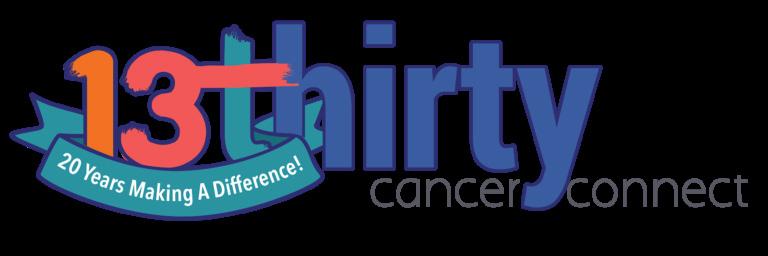
Through a comprehensive array of essential resources, we help AYAs with cancer, aged 13-39, live their very best lives throughout the entire continuum of their cancer experience. Our peer support programs provide social and emotional reprieve from the debilitating effects of cancer while helping develop life-long health maintenance behaviors and coping strategies. Workshops for the healthcare teams who care for them and in-service presentations to school mental health teams, administrators and faculty are designed to help providers better address their needs.
societal and economic implications and we must pay attention. This vulnerable segment of the cancer population has been overlooked for too long and they deserve better.
For 24 years, with the help of many, I’ve done my best to keep my promise but much more needs to be done. Together, we can keep “making a difference and making things better.”
Learn more at 13thirty.org.
13thirty Cancer Connect plays an important role in helping AYAs meet these challenges and successful-
Recent data shows the incidence of early-onset cancer is rising at an alarming rate, with cancer in young adults, aged 30-39, growing by the largest percentage.
This increasing cancer burden among AYAs has important medical,

Lauren Spiker is the founder and executive director of 13thirty Cancer Connect, originally named Melissa’s Living Legacy Teen Cancer Foundation.
In addition to her work at 13thirty Cancer Connect, Spiker serves on the board of the national AYA Cancer Coalition, leads the CNY Cancer Alliance and is active in many community and healthcare collaborations.
These providers do more than ‘crack backs’ — according to ziprecruiter, the average salary for a chiropractor in the Syracuse area is $85,168.
Helping others find immediate pain relief attracted Vincent Sportelli to the chiropractic field. He owns Sportelli Chiropractic Health & Wellness Center in Syracuse where he works as a doctor of chiropractic. While still in college, he hurt his knee playing football. Instead of surgery, his athletic trainer suggested visiting a chiropractor to see if that would help.
“I felt skeptical,” Sportelli recalled. “My knee was out of position. He adjusted my knee, told me exercises to do and I was playing games a week and a half later. The implication was tremendous and it stuck with me.”
He believes that in addition to the required education and licensure, possessing a desire to help people without drugs or surgery is essential for success in the field. While at chiropractic school, he met many who left conventional medicine to study chiropractic care, as they “felt disenchanted with the drugs and sought a holistic approach to healthcare,” Sportelli said. “A desire to help people safely is a motivating factor.”
He said that chiropractic combines art and science, as it’s very hands-on and looks at all aspect of patient health and how they affect the patient’s presenting issue.
Some chiropractors focus on athletics, pediatrics, maternity care, among other specialties. In addition, chiropractors may work in education, training other chiropractors.
Like Barrett Parker, doctor of chiropractic at Allied Spine & Sports Chiropractic in Syracuse, many chiropractors practice as independent providers and small business owners.
“We have many hats we have to wear,” he said. “We take a thorough patient history of previous problems and previous providers. We do a full orthopedic and neurological exam, range of motion and palpitation, soft tissue exam with joint and muscle palpation. Then devise a treatment plan that we think will be appropriate for their condition. It can be an acute management of a sprain or strain or long-term for a rheumatology condition or chronic spine condition like stenosis.”
In addition, chiropractors must document the visit and as needed bill insurance companies.
Parker’s office offers the Graston Technique, an active release technique, which can help desensitize injured tissue. Because the positive effects typically occur quickly, Parker said that many people in the athletic world like the technique so they can get back to their active life sooner. But general rehabilitation and restoration is also a big part of the practice.
By Deborah Jeanne Sergeant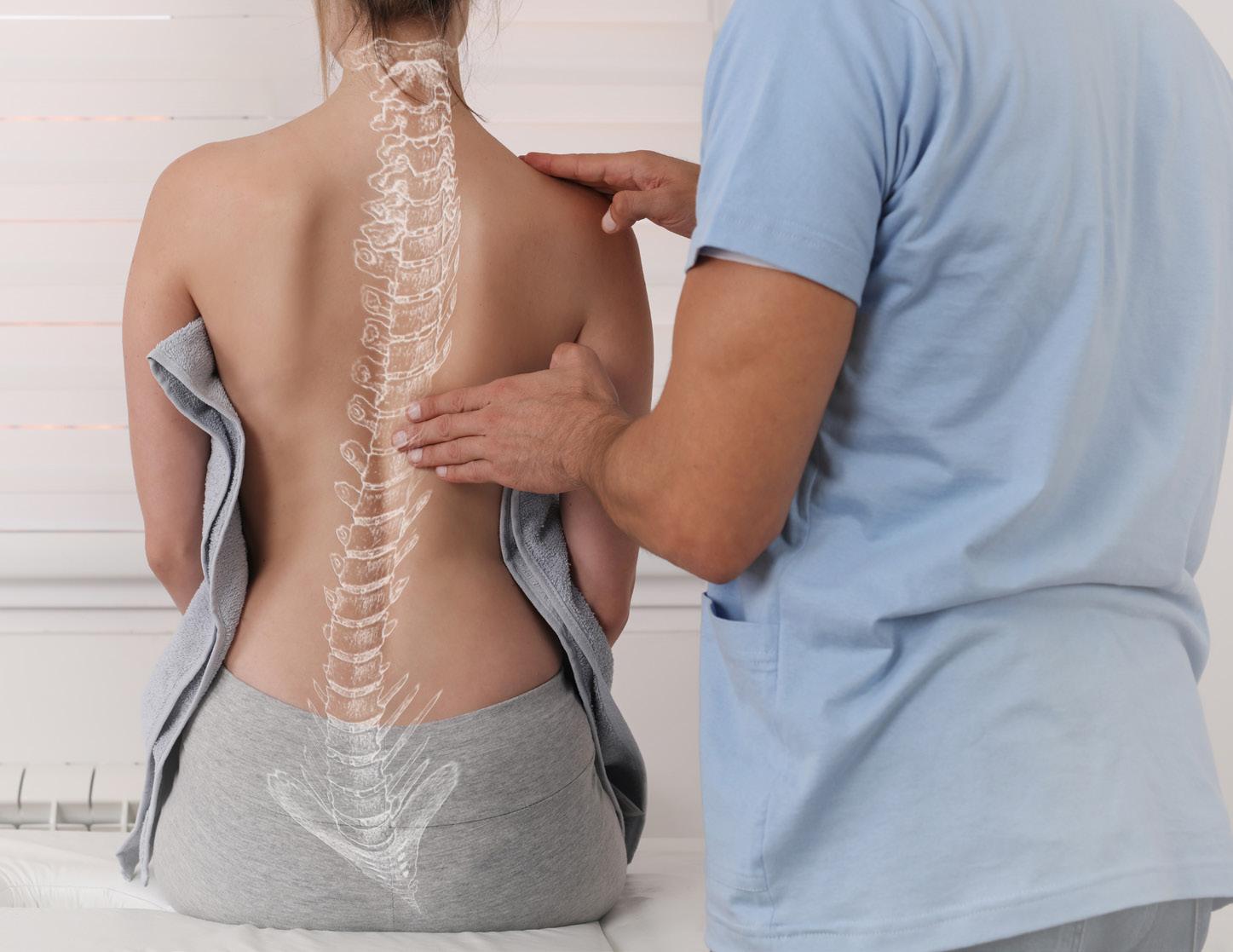
Many people have turned to chiropractic care to avoid taking pain medications.
“Chiropractic users had 64% lower odds of receiving an opioid prescription,” Parker said. “We know what a problem the opioid epidemic is.”
Working as a chiropractor carries the typical challenges of any health career and owning a business. Ed Galvin, chiropractor and owner of Port City Chiropractic Chiropractors in Oswego, mitigates these challenges through planning.
“The best businesses run on systems and then you have to hire the best people to run the systems,” Galvin said. “I’ve been fortunate to always have a great team that helps me to run our office. Dealing with insurance companies is probably the greatest challenge for providers but also for patients.”
Chiropractic coverage differs from standard medical coverage and each insurance plan has a potentially different co-pay, deductible and what they do or do not cover. Medicare covers only chiropractic adjustment, but Galvin hopes that it will someday cover all types of chiropractic care.
“That has been an on-going struggle to get that legislation passed even though it has the potential for huge savings to Medicare,” Galvin said. “Dealing with insurance denials for no reason is both time consuming and frustrating.”
Despite these difficulties, he enjoys his field and enjoys watching patients get well naturally, “oftentimes when nothing else helped them and they thought they were destined to a lifetime of pain and limitation. I’ve been in practice long enough now that some of my patients that
I took care of when they were kids are now bringing their children in to have care.”
Richard “Rick” Tesoriero, owner of Tesoriero Chiropractic Office, PC in Oswego, said that beyond the New York state-issued license and the required education and exams — an undergraduate degree, four-year Doctor of Chiropractic degree and pass the National Board of Chiropractic Examiners exam and the New York state jurisprudence exam — a chiropractor should have “a good, outgoing personality. You can’t be an introvert; you have to be able to speak with your patients and help them open up. You need a personality to listen intently and deal with them.”
Chiropractors are required to complete 36 hours of continuing education credits every three years to maintain their licensure.
Tesoriero finds that most misconceptions about chiropractors derive from how people generally describe how a chiropractor “broke my back” or “crunched my spine” when a patient experiences soreness after a treatment.
Despite these and other challenges, Tesoriero said that he loves his work and doesn’t see himself slowing down anytime soon.
He advises people who are possibly interested in working as a chiropractor to earn a degree in chemistry or biology, which would leave them open to earn a degree in any medical field.
The median salary for a chiropractor in the Syracuse area is not listed on the Bureau of Labor Statistics website. However, in Rochester area it is $79,260.
Children grow, develop and learn throughout their lives – socially and emotionally, cognitively and physically. Every child is different and develops at their own pace. At the same time, there are key skills children need so they can flourish at school and in their communities.
Beginning at birth, children will reach key milestones in how they play, learn, act and communicate (e.g., taking a first step, smiling, waving “bye-bye,” or reaching for a toy). These milestones offer important clues about a child’s developmental health.
Reaching milestones at the typical age shows a child is developing as expected, while reaching them much earlier means a child may be advanced compared with his or her peers of the same age. Not reaching milestones — or reaching them much later than children of the same age — can be the earliest indication that a child may have a developmental delay.
Parents and caregivers play a pivotal role in fostering environments in which their children can achieve developmental milestones and grow to their full potential.
Help Me Grow Onondaga, a key strategy of the Early Childhood Alliance Onondaga, supports them in this role and empowers them with the knowledge they need to help their children thrive. Free services and supports include: information on child development and parenting; connections to basic resources like diapers and formula; customized referrals to community services and supports and Ages & Stages developmental questionnaires.

 IBy Melissa Stefanec MelissaStefanec@yahoo.com
IBy Melissa Stefanec MelissaStefanec@yahoo.com
am officially 150-parenting-columns old. That means I’ve been doling out advice and baring my soul to total strangers for almost 13 years.
I am wildly thankful for this opportunity. Especially because writing about parenting has made me a better parent and human.
That’s because postulating about this journey has caused me to question a lot about myself. Writing these columns has forced me to analyze myself and my habits, thus inspiring me to grow, learn and unlearn. There have been so many times where I have asked myself, “If I’m just as lost as everyone else, why should anyone care what I have to say?”
I don’t know that folks should. But I learned early on that authenticity matters. Adults don’t want to be told what to do, think or feel. However, we all want to feel less alone and connect with others’ experiences. If I could be authentic, maybe people would keep reading.
So, in the name of milestones and fostering authentic connections, here are some of my most important learnings from writing about parenting for 13 years.
I’ve come to understand my children aren’t pieces of art that I’m crafting in my own image. They are actually designing themselves as they navigate this wild world. As a parent, I’m merely a guide and an adviser. I can only help them get their bearings and watch as they set out from there.
My mood can set the tone
Moms have tremendous influence over their environments. If mom
is unhappy, that can really set the tone. I’m not saying us moms should have to spew toxic positivity, but we should realize how much power we have over the tone of our days. If we sweat the small stuff, we just make things worse for ourselves; all that stress comes back to us.
I’ve always found it odd that parents will let their kids watch violent or adult-themed shows or play violent games, and yet they won’t be honest with their kids about things like sex, death, mental health struggles, sexuality or family dynamics. I can be honest with my children (in an age-appropriate way). They want to make sense of the world and people around them. I owe it to my kids to be honest with them about tough things, and I can do that without treating them like adults before they are ready.
Sometimes, I assign adult motivations and reasoning to my children’s actions. That is very unsophisticated adult thinking on my part. Kids’ brains simply aren’t capable of adult reasoning. Children lack the perspective necessary to have adult motivations. Most of the time, they don’t have a hidden agenda. If we are attentive and truly listen, their motivations are usually quite obvious and not in line with an adults’ motivations.
If I’m going to force them to do anything, it should be to get outside
Human beings need fresh air.








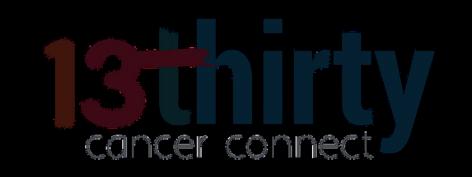

However, it isn’t always easy to persuade humans to do things that are good for them. One of the things I regularly force my kids to do is to get outside. Sometimes that’s with me; sometimes that’s without me. But 95 times out of 100, they are in better spirits when they get back indoors.
Kids food tastes should be respected
When my kids don’t like something, I don’t make them eat it. I encourage them to try new things and eat a variety of foods. I explain to them why doing so is important, and what they might be missing out on, but I don’t make them eat anything. Nobody, no matter their age, wants to eat something they find repulsive.
It’s hard to teach them failing is OK
Failure is a crucial part of personal growth, but kids really hate failing. Failing is painful and embarrassing. So, when I fail, especially at the everyday stuff, I try to broadcast it. Whether it’s dry banana bread, a mistake at work, or something unkind I said to someone, I try to highlight my failures so my kids get more comfortable with the concept.









“Pick your battles” should be “minimize your battles”
Pick your battles is sage advice, but even picking your parenting battles lands you in too many battles. I’ve adopted a credo of “minimize my battles.” Kids often feel powerless, and they will do just about anything to get it. So, I try to be very choosy about when I fight and when I give my kids autonomy.
I have a lot of self work left to do
When I make mistakes, which is often, I remind myself that I’m growing alongside my children. I have so much self-work to do. I’m a messy human, and I owe it to myself and those around me to work on some of those messes. I attend regular therapy and practice self care in hopes of being a better role model and putting an end to, “Do as I say and not as I do.”
150 columns later
I’m a little older, wiser and sleepier than I was 13 years ago, but parenting has made me a better human being. From a young age, I always wanted to be a life-long learner. I used to think most of that learning would come from books and conversations. Little did I know how much I would learn from raising kids.
Stress isn’t only the hair-tearing day of unexpected cancelations, breakdowns and missed connections.
Stress can also come from perfectly happy causes, like a job promotion, new baby or retirement.
Any change can provoke stress. Life is never stress-free and we wouldn’t want it to be. But we can reduce unwanted and unnecessary stress.
“Some researchers define stress as events that are unpredictable, uncontrollable and dangerous or costly,” said Rich O’Neill, Ph.D., a fellow of the Academy of Clinical Psychology, psychologist and professor at Upstate Medical University. “One way to lessen stress is to reduce the amount of unpredictable, uncontrollable and dangerous or costly events in our lives. Planning so that things are not coming at us willy-nilly that might be very potentially costly to us and people around us. If you plan, in a way you’re thinking of how your resources can deal with the challenges of any particular situation and either get the resources you need in advance or get more resources from someplace else or have other people help you with the task.”
Making a plan can prevent the anxiety related to supposing what could happen. Even if the worst
happens, you’re ready. O’Neill also believes that it is important to find out the worst-case scenario. Perhaps that’s not even as bad as you think.
O’Neill said that many people find that mindfulness helps. It works by paying attention to your breathing and sensory input and not judging thoughts that pop up. Spending 10 to 20 minutes regularly practicing mindfulness can decrease harmful stress levels.
Julienne Capria, psychiatrist with Oswego Health, advises improving emotional stress levels by maintaining healthy relationships.
“Are we surrounding ourselves with emotionally stable people or spending too much time with people who are toxic to be around?” she asked. “Also, look at the spiritual causes of stress. Not everyone is a religious persuasion but are we taking time to be mindful, spend time in nature and not focusing on current problems.”
Taking care of basic physical needs can also help the mind and body better tolerate stress. Capria said that different types of stress can affect “the body, mind and spirit.”
Neglecting any one of these areas can compound mental and emotional stress.
Capria said that breathing correctly can help mitigate stress. Try to

Eighty percent of people with a behavioral health disorder see a primary care provider at least annually, according to the Primary Care Collaborative.
Rather than relying on patients to self-refer to mental healthcare providers, PCPs are becoming gatekeepers for mental health than ever before.
The US Preventative Service Task Force recommends PCPs screen for depression in adults in children who
are older than 12. This has become especially important in light of the effects of the pandemic.
“Between 2019 and 2022, depression and anxiety have gone up 25%,” said Kimberly Fortin, licensed clinical social worker in private practice in Weedsport. “That’s a really big number in a short period of time. That in itself should be enough that people should say this is a potential epidemic that’s building; everyone should be screened.”
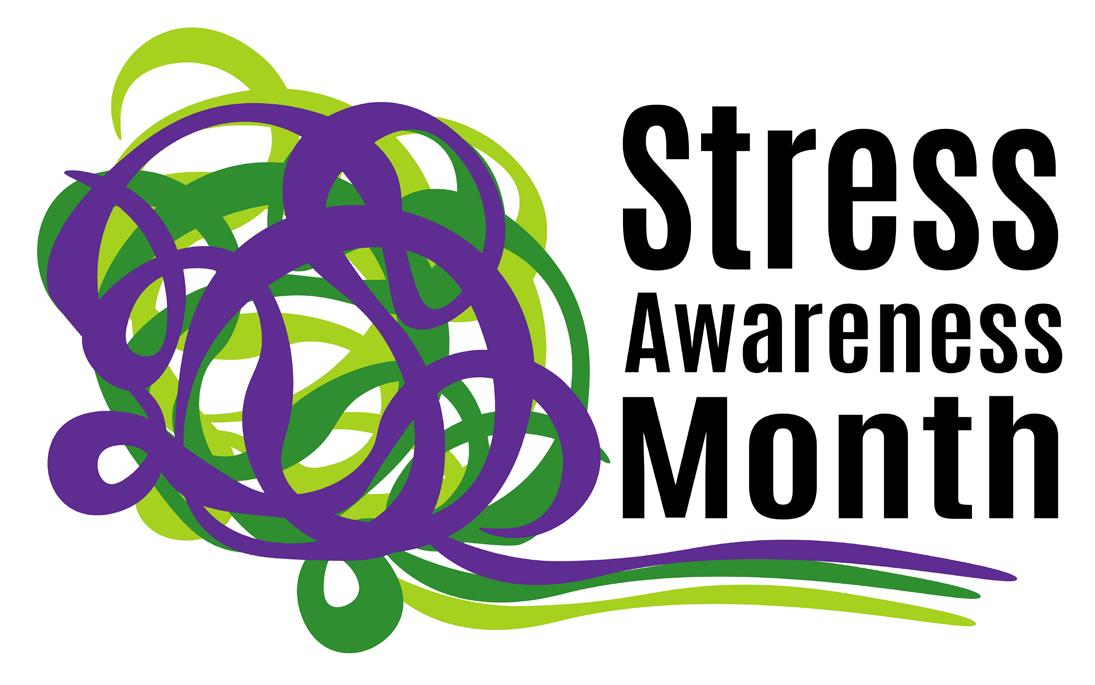
breathe slowly in through your nose and exhale through your mouth, pausing between breaths.
Apps can help you learn correct breathing and other ways to mitigate stress.
Kimberly Fortin, licensed clinical social worker in private practice in Weedsport, likes calm, but searching “’breathing for stress relief’ will bring up a ton of free resources,” she said.
Fortin noted that taking care of physical health can help mitigate the effects of stress.
“Make sure you get a good night’s sleep, eat well, drink water, get sunshine and fresh air,” she said. “Time in nature is an automatic de-stressor. Anywhere in nature is automatically able to bring your stress down. Our bodies are wired for that.”
Most people need around seven to eight hours of rest every night. Maintaining a regular sleep schedule and a restful place to sleep can help establish a good wake-sleep cycle and beneficial slumber. In general, most people need to drink half their body’s weight in ounces of water per
After screening for depression, PCPs can refer patients as needed to seek mental healthcare. Often, the screening tools are a short set of questions that the patient can answer via a paper or digital survey or a few questions the PCP asks to assess mental health. While not a comprehensive mental health evaluation, a screening can help patients consider their mental health and feel freer to talk about it as a routine part of their preventative healthcare.
Fortin said that the screening questionnaires typically result in “scores” that can give the PCP guidance on whether to refer patients to mental healthcare. Fortin believes that these screenings should be a part of every person’s annual physical. This may help dispel any lingering stigma about seeking mental healthcare and encourage patients who have mental health concerns to seek professional help.
Whether PCPs use screening tools is another matter.
“I think it depends on the doctor,” Fortin said. “There was a big push a few years back to do trainings with doctors on the tools.”
According to the US Bureau of Labor Statistics, 20% of healthcare providers left healthcare during the pandemic, meaning that those who remain in healthcare are stretched thinner than ever. Taking time to include one more screening — however important it may be — could prove very challenging.
“PCPs are overwhelmed and are
day (a 150-pound adult would drink 75 ounces of water).
A balanced diet should include plenty of whole produce, lean sources of protein, healthful fats, whole grains and plenty of hydration. Try to reduce consumption of processed foods and simple sugars and simple starches.
The World Health Organization recommends a minimum of 150 minutes of moderate intensity physical exercise throughout the week for supporting good health. This should include aerobic exercise and resistance exercise.
During the pandemic, Fortin began meeting with a friend weekly. The two liked their chats so much that they continue to connect each week.
“Having a support system is good during stressful times,” Fortin said.
In addition to scheduling time with a trusted friend, treat yourself to time for pleasure reading for a few minutes each day, book a massage therapy session and plan to take a long bath or shower, for example.
doing their best to screen when they can,” said Julienne Capria, psychiatrist with Oswego Health. “They might not be equipped with time or knowledge to screen as much as needed. They do whenever they have capacity. We’re hoping it’s something that can be put in place so PCP can reach out to mental healthcare providers in real time when they have a patient who might have mental health problems.”
Still, the pandemic did underscore the importance of mental healthcare, both to patients and providers. This is helping lower stigma about seeking mental healthcare.
“There was an enormous surge in mental health issues during the pandemic which brought more attention to these issues,” said Rich O’Neill, PhD, a fellow of the Academy of Clinical Psychology, psychologist and professor at Upstate Medical University. “The awareness of mental health issues in general has been building prior to the pandemic for many years. PCPs are more aware of it and there’s more attention to it in medical school.”
Upstate Medical University began a new initiative, Nappi Wellness Institute, a 200,000 square-foot outpatient facility that includes primary care and specialty healthcare, including social services and behavioral health. By addressing mental health as part of wellbeing and physical health, providers can better ensure that patients receive the care they need.


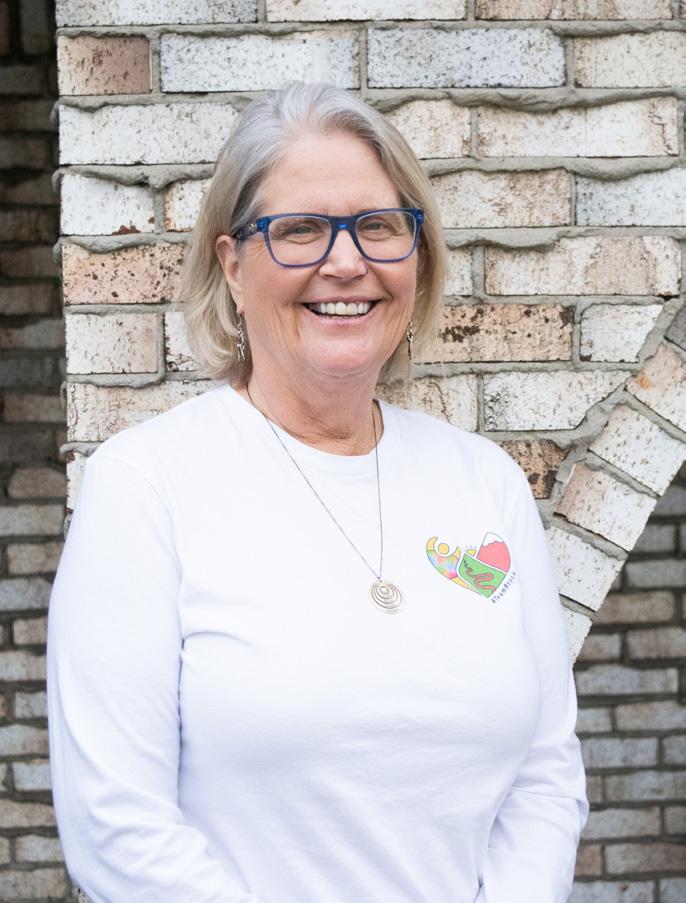
Deborah T. Curtis doesn’t label herself as a cyclist. That’s a title she says she’ll give herself once she gets done riding clear across the country this spring. What she does label herself as is — a mom.
When these two aspects of the Clarence resident — one burgeoning and one a part of herself for several decades — combine, what she has become is a strong advocate for mental health awareness and access to treatment.
Curtis knows first-hand how devastating mental illness can be for individuals, as well as those who love them.
She lost her son, Brock, to his battle with mental illness in 2021. Brock was the youngest of four children and Curtis said that those who knew him would describe him as the all-American kid. “Six-foot-three tall, handsome, blonde-haired and blueeyed,” she said. “I think most of his friends’ parents would describe him as charming and funny. He loved to travel.”
While Brock was quiet as a child, sports brought him out of his shell and he played just about every one you could think of, but baseball was his favorite. Both athletics and travel would become defining features in Brock’s 24 years of life, during which time he managed to visit five continents. Among those were two studyabroad programs in Seoul, Korea, in Peru as well as time spent at school in Florida and California before grad-
uating from Niagara University.
According to his mom, it was around the time that he studied in Peru that some signs and symptoms of mental health issues began to appear.
Ultimately, Brock would be diagnosed with bipolar disorder around the age of 21.
Among the important messages that Curtis is trying to bring light to is that the onset of mental illness can happen later than many might think. According to Curtis, the highest incidence for onset of mental health issues is between the ages of 18 and 25.
“One of the things with mental illness is that many times, the person who has it feels ashamed or embarrassed and they wouldn’t if they were diabetic, if they had cancer,” she said.
Ending that stigma is one of the primary reasons that following the loss of her son, Curtis founded The Tallman-Curtis Family Foundation, Inc., a 501(c)(3), known affectionately as 4TeamBrock.
Each syllable of the foundation’s name pays homage to the young man it honors. The “4” is representative of his position as the youngest of four siblings; “team” is a nod to his love of sports and of course, Brock, the young man who Curtis knows can help her inspire meaningful changes.
It is in his memory and honor and with the logo of the foundation attached to her saddlebag, that Curtis
is riding more than 3,400 miles over the course of roughly two months from San Diego, California to New York City beginning in March.
While on the road, Curtis will stay intermittently with family and friends, as well as in hotels and she will also celebrate her 62nd birthday while on the road.
It’s a formidable ride, no doubt, but making meaningful impacts in the ways Curtis and the foundation hope to is no light lift, either.
In addition to recognizing that mental health issues should be destigmatized and that this area of wellness should be treated with the same openness and empathy as any other, Curtis said that access to care also needs to be made easier.
She recalled, “At the time Brock was sick, my one daughter was in med school, my husband and I had decent jobs and had good health insurance and finding the right doctors and getting an appointment, my daughter literally cried to one of her professors to get a recommendation and even then, it took another six weeks.”
For those without the same resources as the Curtis family, she said, finding help can be even more challenging and that is not a position that any person facing any illness should be left in.
Beginning with the ride and extending through the foundation, Curtis hopes to begin to move the needle on these issues, including
helping to implement peer-to-peer counseling for young people experiencing mental health issues and sparking important conversations on the topic.
While she did not fundraise for the bike ride itself and is financing the journey out of her own pocket, those inspired by her endeavor can make donations to the foundation by visiting https://4teambrock.com/
While cycling such huge distances is a new undertaking — before this summer the furthest Curtis had gone on two wheels was 70 miles back in 1989 — physical activity is something that has helped her remain close to the memory of her son and process through her grief.
Following Brock’s passing, she participated in the Tour du Mont Blanc which is a roughly 103-mile trek through portions of Switzerland, Italy and France, and last summer, she walked from Florence to Rome.
She recently retired from her job as a professor at Niagara University, where she taught in the College of Hospitality, Sport, and Tourism Management.
To traverse the width of the US, she decided that wheels would be in order this time around and says that what she lacks in experience, she makes up for in determination.
“Brock was really into the outdoors and sports and he would be the one going with me on this bike ride if he was here,” she said.
And in many ways, he will be.
If you’ve been diagnosed with depression, it’s important to follow your provider’s guidance, including taking any prescribed medication. But a few lifestyle interventions can also help reduce symptoms of depression.
Of course, professional therapy can improve depression, but just talking “with a friend or safe person who won’t judge or criticize you” also helps, said Julienne Capria, psychiatrist with Oswego Health.
Venting a bit can help you feel understood and build necessary camaraderie.
A sense of accomplishment can also help improve mood, such as cleaning a room or, Capria suggested, even an area in a room.
Tidying up can also dispel the monotony of sameness that lends to depressive moods.
“In addition to taking medication for depression, staying active, at a bare minimum going outside,” Capria said.
Especially during the darker months of the year, light therapy may help, as this mimics the effect of sunlight. Exercise outside such as walking combines both the benefits of sun exposure and physical activity. The body generates vitamin D, a pre-hormone, with sun exposure. A study from the National Institute of Health indicates that low vitamin D levels correlate with higher levels of depression and anxiety. It’s also part of why people experience seasonal affective disorder.
“A lot of people are affected by SAD,” said Kimberly Fortin, licensed clinical social worker in private practice in Weedsport. “I’d encourage
talking with the doctor about getting their vitamin D levels checked. Lack of sunshine impacts depression a lot.”
She added that a solar light or sunshine exposure for 20 to 30 minutes helps with any type of depression, not just SAD.
In addition to light therapy, Fortin encourages clients to engage in exercise. Although it can be tough to start or return to an exercise regimen while depressed, she said that starting gradually can make it easier.
“Put on your shoes and walk to the mailbox,” she said. “Or walk to the end of the block and come back. Studies are showing that for some, exercise is more effective than medication. It boosts serotonin so much.
A High intensity interval training workout will give the biggest bang for the buck for getting serotonin levels up as fast as possible, but longterm walking is going to give you a sustained sense of feeling better. Are you trying to get a quick get those levels up ASAP to feel better for a few hours or to feel better all day?”
What you eat can make a difference in how you feel. Slowly digested carbohydrates from whole foods such as whole grains like brown rice and whole produce like an apple or green beans, can offer a boost to serotonin levels.
“But refined carbs and sugars make depression symptoms worse,” Fortin said. “You might get temporary relief but it’s not going to be long-term. ‘Slower’ carbs and pairing it with protein helps slow down the carbohydrates in the digestive system. It balances out the carbs.”
Adding healthful fats such as

from nuts, seeds and fatty fish can also help improve mental health. Fortin said that the Mediterranean diet has been touted as one of the best for mental and physical health, as it includes these foods, plenty of produce, fewer refined foods and lean meats.
Poor sleep contributes to a host of physical and mental health conditions, including depression.
“Everyone needs to get more sleep. Almost everyone,” said Rich O’Neill, Ph.D., a fellow of the Academy of Clinical Psychology, psychologist and professor at Upstate Medical University.
He said that chronic sleep deprivation “makes us depressed, irritable and anxious. We’re not much fun to be around.”
Improving sleep hygiene can help, such as a regular sleep schedule; sleeping in a dark, comfortable, quiet environment; avoiding caffeine and screens before bedtime and engaging in soothing bedtime routines to settle down before resting.
O’Neill also recommends to patients that they need to stay engaged and active in pursuits that they enjoy.
“Get together with other people,” he said. “We are social beings and need to connect with other people in
a positive way. One way is to connect around something you have in common rather than splitting people over your differences. Don’t get together and argue about politics and religion. Instead do something that both of you like and you’re in agreement on.”
It’s also vital to cultivate hobbies and interests. When pursuing these, people can reach peak experience — when they’re really into it. O’Neill said that research on “flow” or intense enjoyment shows that when people reach peak experience, they’re happiest than at any other point of the day with the exception of eating or having sex.
“Other than that, when they were engaged in a task they valued, took a lot of resources to engage in, and in which they got feedback about their progress towards their goal, they were having the best experiences,” O’Neill said. “Athletes often refer to it as flow, being ‘in the zone.’ To have a happier life with less depression, find something that fits those criteria.”
He added that volunteering your time to help someone less fortunate than you can also help alleviate depression symptoms.
Excellus BlueCross BlueShield has announced a new multiyear collaboration with Well be Senior Medical, an independent company that will bring care directly to the homes of some of their most vulnerable Medicare Advantage members.
Members who are eligible for this program have many chronic medical conditions, are taking a dozen or more prescription medications, have frequent emergency department visits and hospital admissions, as well as a high prevalence of behavioral health needs.
“This group represents some of our most at-risk members who are in need of comprehensive, coordinated, and convenient care,” explains Tony Vitagliano, Excellus BCBS SVP provider network engagement. “Approximately 30,000 of our members are eligible for this service.”

As a geriatric care provider, WellBe specializes in caring for patients living with multiple chronic conditions and complex illnesses. Eligible members will benefit from personalized in-home care as needed, help managing prescription medications, and in-home urgent care services available 24/7.
“WellBe providers work directly and collaboratively with our members’ primary care providers and caregivers,” adds Vitagliano. In addition to medical providers, Well be offers an interdisciplinary team that includes social workers, geriatric behavioral health specialists, pharmacists and an around-the-clock
mobile urgent care.
“At WellBe, we believe that everyone should have access to comprehensive, personalized health care, and we’re thrilled that Excellus BCBS shares this vision,” states Dr. Jeffrey Kang, founder and CEO of WellBe Senior Medical. “WellBe’s in-home care can provide information and insights, including advance care planning, social support and behavioral health, and complex care management.”
The goal of this collaboration is to improve outcomes and healthcare quality, reduce unnecessary medical costs, and provide an exceptional member experience. Vitagliano notes, “Adding WellBe to our provider network furthers our overall mission to help people in our communities live healthier and more secure lives through access to high-quality, affordable health care.”
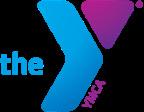



personal My Social Security account can be helpful in so many ways. You can benefit from its personalized tools even if you are not retired or close to retirement.
With your personal My Social Security account, you can do much of your business with us online. You rarely need to call or visit a local Social Security office once you have one.
Let’s look at some of the features offered by an account.
If you do not receive benefits, you can:
• Request a replacement Social Security card (in most states and the District of Columbia).
• Check personalized retirement benefit estimates to compare different dates or ages to begin receiving benefits.
• Check the status of your Social Security application after you apply.
Q: I know you need to have limited resources to receive Supplemental Security Income (SSI). But what is considered a resource?
A: Resources are things you own that you can use for support. They include cash, real estate, personal belongings, bank accounts, stocks, and bonds. To be eligible for SSI a person must have no more than $2,000 in countable resources. A married couple must have no more than $3,000 in countable resources. If you own resources over the SSI limit, you may be able to get SSI benefits while trying to sell the resources. Not all of your resources count toward the SSI resource limit. For example:
• The home you live in and the land it's on do not count.
• Your personal effects and household goods do not count.
• Life insurance policies may not count, depending on their value.
• Your car usually does not count.
• Burial plots for you and members of your immediate family do not count.
• Up to $1,500 in burial funds for you and up to $1,500 in burial funds for your spouse may not count.
• If you are blind or have a disability, some items may not count if you plan to use them to work or earn extra income.
You may also wish to read our material on "resources" in the booklet, "Understanding SSI" at www.ssa. gov/ssi/text-understanding-ssi.htm.
• Get proof that you do not receive benefits.
• Get your Social Security statement.
If you already receive benefits, you can:
• Request a replacement Social Security card (in most states and the District of Columbia).
• Get a benefit verification or proof of income letter.
• Update your direct deposit (Social Security benefits only).
• Update contact information (Social Security benefits only).
• Get a Social Security tax form (1099/1042S).
• Opt out of receiving certain notices by mail and receive them in the secure message center.
Please help us spread the news! Let your family and friends know that they can create a personal my Social Security account today at www.ssa.gov/myaccount.
Q: What is substantial gainful activity (SGA)?
Answer: We use the term “substantial gainful activity,” or “SGA,” to describe a level of work activity and earnings. Work is “substantial” if it involves doing significant physical or mental activities or a combination of both.
If you earn more than a certain amount and are doing productive work, we generally consider you to be engaging in SGA. For example, the monthly SGA amount for 2024 is $1,550. For a statutorily blind person, that amount is $2,590. In these cases, you would not be eligible for disability benefits if you made more than those amounts. You can read more about substantial gainful activity and determine if your earnings are considered as SGA at www.ssa.gov/ oact/cola/sga.html.
Q: I'm expecting a baby this June. What do I need to do to get a Social Security number for my baby?
A: The easiest way to apply for a number for your newborn is at the hospital when you apply for your baby’s birth certificate. The state agency that issues birth certificates will share your child’s information with us and we will assign a number and mail the Social Security card to you. You can learn more about the "Social Security number and card by reading our online publication. Social Security Numbers for Children", available at www.ssa.gov/pubs/EN-05-10023. pdf.
Dear Savvy Senior,
Does Medicare offer any financial assistance programs to help seniors with their medication costs? I recently enrolled in a Medicare drug plan, but I take some expensive medications that have high out-of-pocket costs and need some help.
Living on a Shoestring
Dear Living,
Yes, there’s a low-income subsidy program called ‘Extra Help’ that assists Medicare beneficiaries on a tight budget by paying for their monthly premiums, annual deductibles, and co-payments related to their Medicare (Part D) prescription drug coverage.
And, thanks to the Inflation Reduction Act that was passed by Congress and signed into law in late 2022, this program has expanded and gotten easier to qualify for in 2024. Even if you’ve applied and didn’t qualify before, you may be eligible now.
The Extra Help benefit is estimated to be worth about $5,300 per year. Currently over 13 million people are receiving this subsidy, but there’s around 3 million more who may qualify for it but don’t realize it.
The amount of financial assistance you would receive depends on your income and assets. If you qualify, you’ll pay no premium or deductible (unless receiving a partial subsidy), and no more than $4.50 for each generic drug or $11.20 for each brand-name drug your plan covers in 2024.
To get the subsidy, your resources must be limited to $17,220 or $34,360 for married couples living together. Bank accounts, stocks, bonds, mutual funds and IRAs count as assets, but your home, vehicle, personal belongings, life insurance and burial plots do not.
Also, your annual income must be limited to $22,590 for an individual or $30,660 for married couples. If you support a family member who lives with you, or you live in Alaska or Hawaii, your income can be higher. In addition, the government won’t count any money if you receive help for household expenses like food, rent, mortgage payments, utilities and property taxes.
There are three ways to see if you qualify and apply for Extra Help: online at SSA.gov/medicare/part-dextra-help; by calling Social Security at 800-772-1213; or by visiting your local Social Security office.

The application form is easy to complete, but you will need your Social Security number and information about your bank balances, pensions and investments. Social Security will review your application and send you a letter within a few weeks letting you know whether you qualify.
If you don’t qualify for Extra Help, you may still be able to get help from a state pharmacy assistance program or a patient assistance program. Visit NeedyMeds.org to search for these programs.
If you’re eligible for Extra Help, you may also qualify for help with your other Medicare expenses through your state’s Medicare Savings Program.
State Medicaid programs partner with the federal government, so income and asset qualifications vary depending on where you live. Medicare Savings Programs will pay your entire Medicare Part B premium each month. And in some cases, they may also pay your Medicare deductibles, coinsurance and copayments, depending on your income level. To find out if you qualify, contact your state Medicaid office.
You can also get help through your State Health Insurance Assistance Program (SHIP), which provides free Medicare counseling in person or over the phone. Visit ShipHelp.org or call 877-839-2675 to locate a counselor in your area.
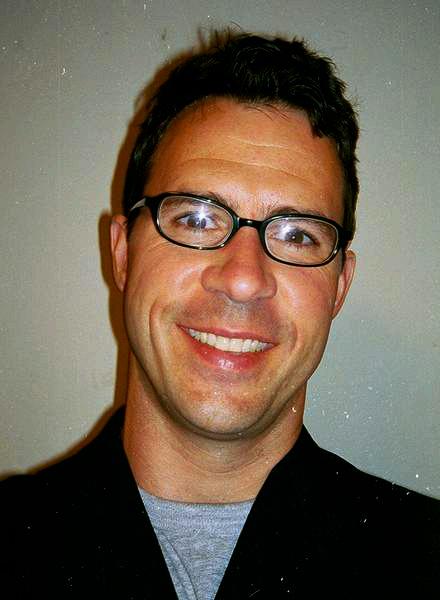
Send your senior questions to: Savvy Senior, P.O. Box 5443, Norman, OK 73070, or visit SavvySenior. org. Jim Miller is a contributor to the NBC Today show and author of “The Savvy Senior” book.
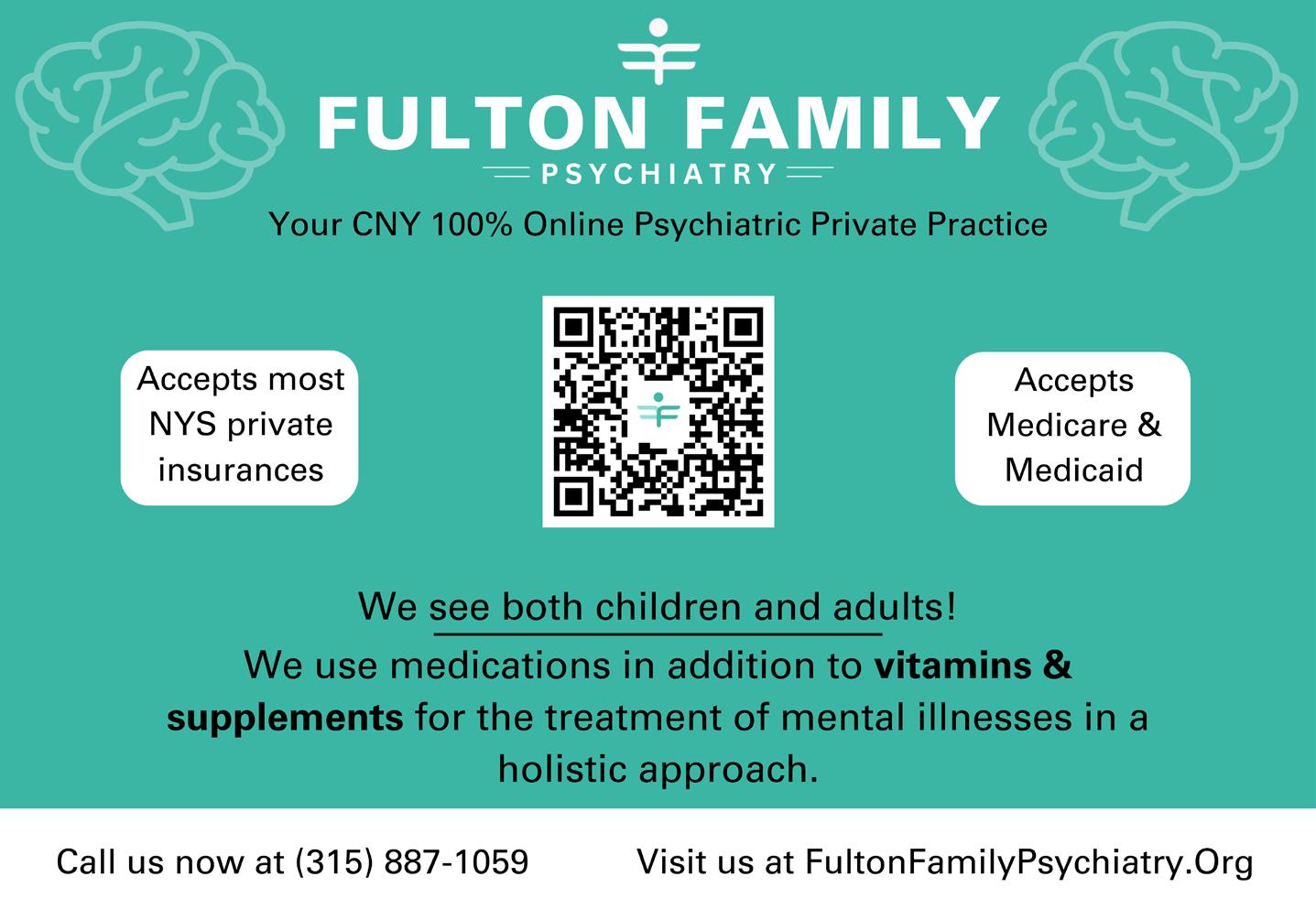




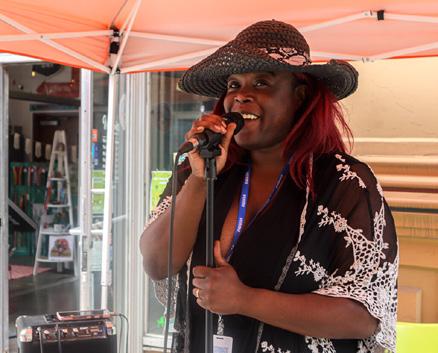





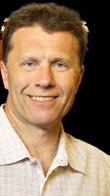



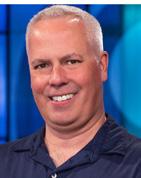









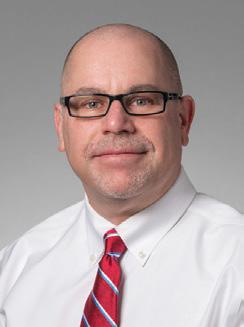
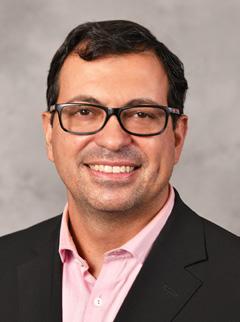

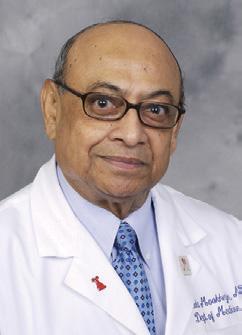









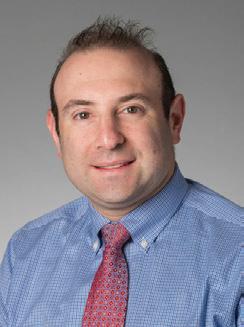


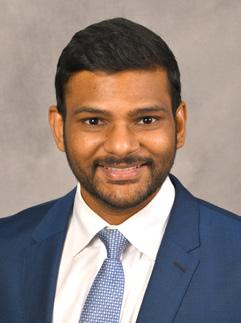
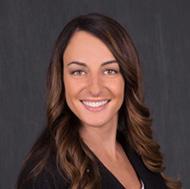
Crouse Health has announced
Rebecca Houde that Rebecca Houde has been appointed director of human resources. She most recently served as chief human resources officer for Helio Health (formerly Syracuse Behavioral Healthcare). Prior to that she was human resources director for SBH and also served in various HR roles for Empire Vision Centers in Syracuse.
In her new role at Crouse she will oversee all HR functions, including strategic direction, planning coordination, workforce development, talent acquisition and management, compensation and benefits and leadership and staff development.
A Syracuse native, Houde holds a master’s degree in business administration from SUNY Oswego.
Andrew Dober appointed director of labor sales at Excellus
Excellus BlueCross BlueShield
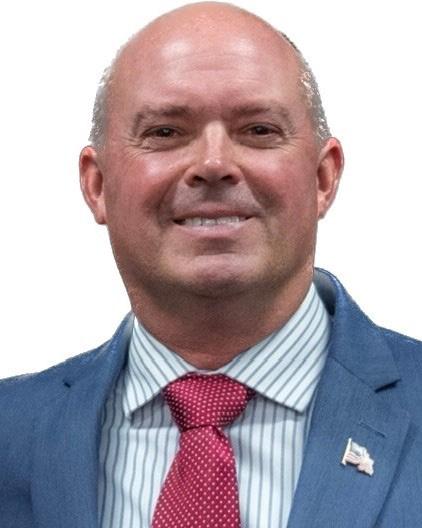
Andrew Dober has appointed Andrew Dober director of labor sales.
Dober began his career at Excellus BCBS in 1992 and has held a variety of sales positions in areas including commercial sales and the government programs division. Since 2000, he has been dedicated to serving, retaining and growing the health insurer’s labor book of business across its 31-county service area. With this new appointment, Dober
will also serve as the health plan’s corporate designee to the Blue Cross Blue Shield Association’s (BCBSA) National Labor Office (NLO).
Dober, a 2013 graduate of Leadership Greater Syracuse, is NYS-licensed in life, accident and health, and earned an Associate in Science degree with honors in labor studies from Onondaga Community College, a Bachelor of Science degree in business and human resources management from SUNY Brockport, and an Advanced Labor Studies certificate from the BCBSA’s National Labor Office at Rutgers University.
He currently serves on the Labor and Employment Relations Association (LERA) board and volunteers with various organizations.
Bishop’s Commons at St. Luke, a senior living community in Oswego, has been honored as a best of senior living 2024 award winner by A Place for Mom (APFM), the leading online platform and trusted advisory service for senior care in North America.
The best of senior living honor represents the top-rated senior living communities and in-home care providers across the US and Canada, de termined by the reviews of residents and their families. A Place for Mom’s 2024 Best of Senior Living Awards recognizes the top 1-2% of nearly 45,000 senior care providers across the country for providing exemplary care and support to aging seniors.
at A Place for Mom. “We collect more than 50,000 new reviews every year, with over 400,000 on our platform in total, which provide first-hand expe riences of senior living communities and home care providers, offering in valuable insights on areas that matter most to families like quality of care, feedback on staff, and costs.”
Three physicians have joined Upstate Medical University’s depart ment of pulmonary critical care and sleep division.
They are:
• Ryan Butzko has been named

“We are pleased to be a recipient of the “Best of Senior Living 2024” award by A Place for Mom,” said Karen Murray, executive director at Bishop’s Commons. “This recognition is reflective of our incredible staff and the quality care and services we provide each and every day to our residents.”
“Reviews from a trusted platform are a critical part of the customer experience when new prospective residents are evaluating senior living communities and home care providers,” said Sue Johansen, executive vice president of community network
journal.
• Phillip Gary has been named
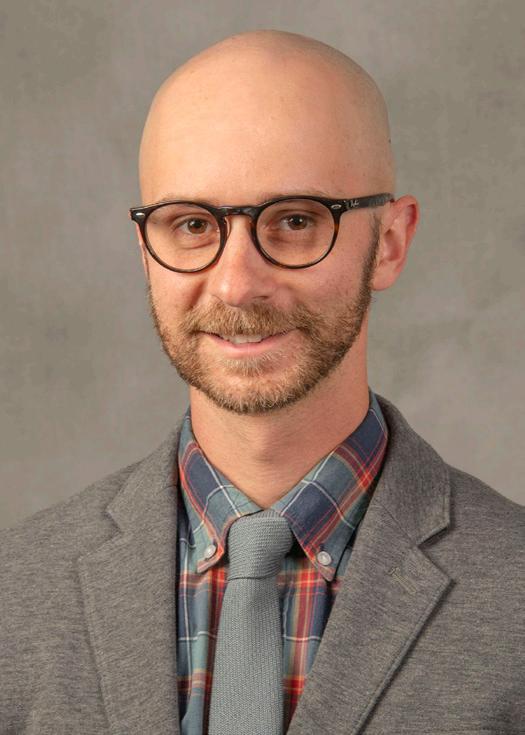
Ryan Butzko assistant professor of pulmonary critical care. Butzko will see patients at Upstate University Hospital Downtown Campus, Community General Hospital location (including the Pulmonary Critical Care outpatient clinic), and the Upstate Sleep Center. Butzko received his medical degree from the New York Institute of Technology’s College of Osteopathic Medicine. He completed his internal medicine residency at Rutgers New Jersey Medical School and served as a fellow in pulmonary and critical care, and sleep medicine at the Donald and Barbara Zucker School of Medicine at Hofstra/Northwell.
Among his honors, Butzko received Best Poster Presentation Northwell/Hofstra Academic Competition and Research Symposium for “A Case of Multisystem Inflammatory Syndrome and Severe Cardiac Dysfunction After COVID-19 In an Adult.”
Gary Phill assistant professor of pulmonary critical care. He will see patients at Upstate University Hospital Downtown Campus and Upstate Health Care Center.
Before joining Upstate, Gary served as a clinical fellow in pulmonary and critical care at the Mayo Clinic in Rochester, Minnesota. He earned his medical degree from Drexel University College of Medicine and served as chief resident at Lankenau Medical Center, Wynnewood, Pennsylvania.
Gary has been recognized with various honors, including John S. Zachariah, MD Award for Scholar, Teacher, and Humanitarian from Lankenau Medical Center.
• Mansur Javaid has been named
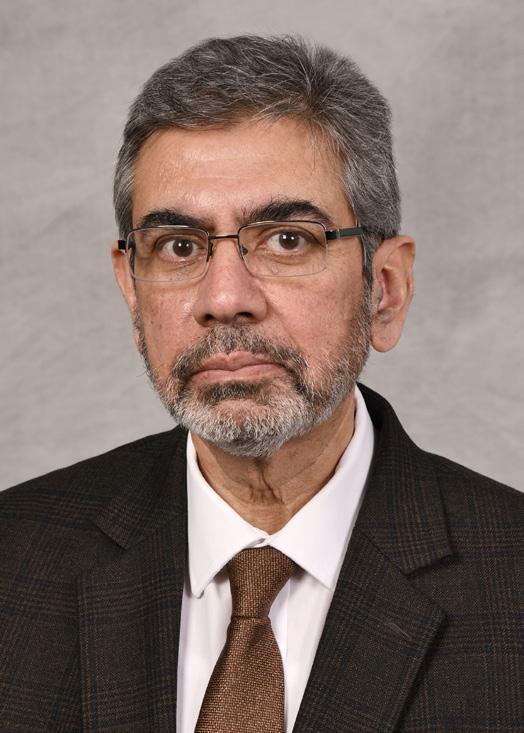
assistant professor of pulmonary critical care. He will see patients at Upstate University Hospital Downtown Campus and at the Upstate Health Care Center (UHCC).
Before joining Upstate, Javaid was a physician and assistant professor of medicine at University of Connecticut and at the Hospital of Center Connecticut New Britain. He received his medical degree from King Edward Medical College and completed residency training at the University of Connecticut.
His recent abstracts and publications have addressed Budd-Chiari syndrome and the use of forced oscillation technique in veterans with preserved spirometry and chronic respiratory symptoms in Respiratory Physiology and Neurobiology
Physician Muhammad Asad Khan, a vascular surgeon at St. Joseph’s Physicians Vascular Surgery, has performed a groundbreaking procedure that could lead to more patients having minimally invasive options for major vascular surgeries.
In January, Khan became the first vascular surgeon in Central New York to use a minimally invasive surgical approach (called endovascular surgery) to remove a suprarenal aneurysm. This type of aneurysm is rare, involving one or more blood vessels that branch off the aorta (the main artery in your body that pumps blood out of the heart) including
renal arteries. Khan’s surgery was the first three-branched endovascular repair, involving both renal arteries and the superior mesenteric artery.
This type of aneurysm frequently requires an open thoracoabdominal approach (TTA) for surgical repair which involves the surgical removal of a section of the aorta and replacing it with an artificial graft. It is a complicated procedure that uses an exceptionally large incision (and scar) and may require the use of a heart-lung machine to help preserve blood supply to vital organs during surgery.
An endovascular approach uses the insertion of catheters (long, thin,
flexible tubes) into small incisions to access the arteries and veins. Khan’s patient had a successful surgery and was released from the hospital in two days.
“Traditional vascular surgery has the potential for more complications, including possible renal failure and higher mortality rates. Patients remain in the hospital for at least a week and have longer recovery periods,” said Khan. “The success of this less invasive technique could lead to opportunities to more safely remove other aneurysms that extend from the chest to the stomach without major open surgery.”
He has published on various procedures, including bronchoscopy, fiber optic endoscopic evaluation of swallowing, chest tube insertion, and thoracentesis, among others.




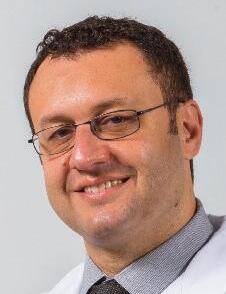




Pediatr c urology, treatment of hernias and hydroce es, robotic surger y, urinar y trac t infec tions penile abnormalit es


General urology, female and reconstruc tive urology

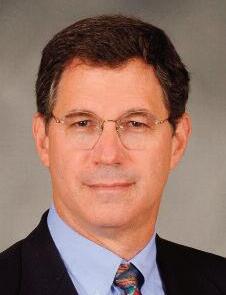
General urology

Reconstruc tive urology; incontinence, prosthetics ur nar y stu a, neurogenic bladder, urinar y diversion Robot c surger y
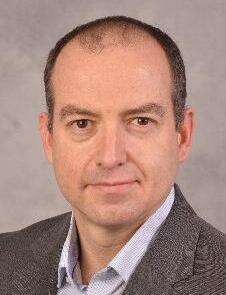

Urologic oncology; robot c and laparoscop c surger y of prostate, k dney, bladder, and adrenal

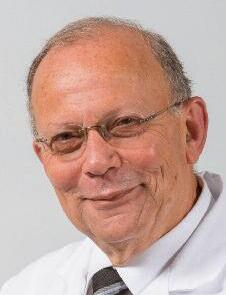



Uro ogic oncology; robotic and laparoscopic surger y of prostate kidney bladder and adrenal
Incontinence, urethral stric ture disease vesicovaginal stula, reconstruc t ve surger y, transgender care


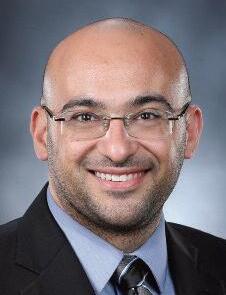

General urology, male health, urologic oncology, enlarged prostate, kidney stones At Upstate Urology of Auburn.
GARRETT SMITH, MD EYAL KORD, MD
EYAL KORD, MD
General urology, male health, uro ogic oncology, enlarged prostate, kidney stones , and robotic surger y
Pediatric urology, treatment of hern as and hydroceles, robotic surger y urinar y trac t infec tions, peni e abnormalities
Urologic oncology; robotic and laparoscopic surger y of prostate, k dney bladder and adrenal




